Coca-Cola Marketing Strategy: A 2024 Comprehensive Case Study
Introduced over a century ago, Coca-Cola remains the world’s most consumed soda, illustrating its unparalleled ability to engage and captivate consumers globally. This case study explores the marketing strategy of Coca-Cola that continues to make it the leading manufacturer and licensor of nonalcoholic beverages, offering a staggering 3,500 varieties across more than 200 countries.


From Pharmacist's Elixir to Global Refreshment Drink
On May 8, 1886, Dr. John Pemberton created what is now known as Coca-Cola. Originally sold at a pharmacy in Atlanta as a medicinal elixir, Coca-Cola has transformed into a global refreshment enjoyed daily by millions.
What is Coca-Cola's Marketing Strategy?
The strategic marketing decisions made by Coca-Cola are largely responsible for its success. The company's approach includes comprehensive branding , widespread distribution, creative advertising, and innovative customer engagement tactics. Coca-Cola’s overarching vision continues to drive its global agenda, remaining focused on refreshing the world in mind, body, and spirit and making a difference to the people and communities it serves. This vision has enabled the company to maintain direction and momentum through periods of uncertainty.
Coca-Cola Target Audience
- Age : Targets youths (10–35 years) with celebrity endorsements and vibrant campaigns, while also catering to health-conscious older adults with products like Diet Coke and Coke Zero.
- Income and Family Size: Offers various packaging options across different price points to ensure affordability for students, middle-class families, and low-income groups.
- Geographical Segmentation: Tailors its formulas to suit regional tastes, such as sweeter versions in Asia, to resonate with local preferences.
- Gender: Differentiates offerings like Coca-Cola Light for women and Coke Zero for men, focusing on taste preferences linked to gender.
Advertising

From early advertisements in newspapers to groundbreaking campaigns like "I’d Like to Buy the World a Coke," Coca-Cola has always known the power of effective advertising. Each campaign not only promoted their product but also cemented Coca-Cola’s place in the cultural landscape. Coca-Cola’s advertising campaigns are designed to resonate on a global scale while maintaining local relevance. These strategies include:
- Creative Campaigns: Engaging and visually appealing ads that capture the essence of joy and refreshment.
- Emotional Branding : Utilizing regional languages and culturally relevant content to connect emotionally with consumers.
- Celebrity Partnerships: Collaborating with local and international celebrities to widen reach.
- Wide Coverage: Utilizing multiple channels, from traditional media to digital platforms.
- Engagement : Interactive campaigns and social media strategies to engage with a younger audience.
- Sponsorships : Long-standing partnerships with major events like the Olympics, FIFA World Cup, American Idol and popular TV shows enhancing brand visibility and consumer connection globally.
Coca-Cola has also embraced personalization in its past campaigns, from names on bottles to personalized marketing emails, enhancing consumer loyalty and personal connection with the brand.
1. "Share a Coke" Campaign
Launched initially in Australia in 2011, the "Share a Coke" campaign is one of the most celebrated and successful marketing strategies in Coca-Cola's history. The campaign was groundbreaking in its approach—replacing the iconic Coca-Cola logo on bottles with common first names. The idea was simple yet powerful: personalize the Coke experience to encourage sharing and create a personal connection with the product. Consumers could find bottles with their names or the names of friends and family, making it not just a purchase but a personalized social experience. The campaign heavily leveraged social media, encouraging people to share their Coca-Cola moments online with the hashtag #ShareaCoke, which amplified the campaign's reach exponentially. After its initial success in Australia, the campaign rolled out in over 80 countries with country-specific names and designs, each resonating with local audiences and cultural nuances.
2. "I'd Like to Buy the World a Coke" (Hilltop)
Originally aired in 1971, the "Hilltop" commercial for Coca-Cola, also known as "I'd Like to Buy the World a Coke," remains one of the most iconic advertisements in the history of television. Conceived by Bill Backer of McCann Erickson, the commercial featured a diverse group of young people from all over the world singing on a hilltop in Italy. The ad's simple yet profound message of hope and unity, expressed through the lyrics "I'd like to buy the world a home and furnish it with love," struck a chord during a time of political unrest and social change. The commercial became more than just an ad; it became a cultural icon, evoking feelings of peace and camaraderie at a global scale. The ad's popularity led to several remakes and re-releases over the decades, including a famous 1990 version featuring the original singers and their children, and a Super Bowl version in 2011.
3. "The Happiness Machine"
As part of its "Open Happiness" campaign, Coca-Cola launched "The Happiness Machine" video in 2010. The campaign featured a specially designed Coke vending machine placed in a college campus that dispensed not just bottles of Coke but surprising acts of "happiness" – from pizza and flowers to balloon animals. The video quickly went viral, thanks to its genuine, unscripted reactions and feel-good vibe. It amassed millions of views on YouTube, bringing widespread attention and goodwill toward the brand. This campaign emphasized Coca-Cola's focus on selling experiences and emotions associated with the brand, not just the product. It highlighted the brand’s commitment to spreading joy and happiness. The success of the "Happiness Machine" led to the creation of similar campaigns globally, harnessing the power of viral marketing and showing the brand's innovative approach to engaging with younger audiences.
Social Media and Digital Marketing

Coca-Cola has evolved its marketing strateg y from traditional mediums to a more integrated, multi-channel approach. The focus is now on building personal connections with consumers and leveraging digital platforms for targeted and engaging marketing campaigns. This shift has allowed Coca-Cola to maintain its relevance. Coca-Cola has embraced the digital age with robust online presence across platforms like Facebook, Twitter, Instagram, YouTube, and Snapchat. The brand leverages SEO , email marketing , content marketing , and video marketing to engage a broader audience effectively.
Coca-Cola Marketing Strategy
Coca-Cola employs a dual-channel marketing strategy :
- Personal Channels: Direct interaction with consumers to build personal connections.
- Non-Personal Channels: A mix of traditional and digital media, including newspapers, TV, social media, email, and outdoor advertising, to ensure widespread reach.
Coca-Cola’s Marketing Mix: The 4 Ps
- Product Strategy: Coca-Cola boasts an extensive portfolio of 500 products, positioned strategically within the market to maximize reach and profitability. Coca-Cola’s commitment to maintaining its original formula and ensuring product quality has fostered deep brand loyalty . Even when new recipes were introduced, such as New Coke, the public’s attachment to the original formula brought it swiftly back. To cater to diverse consumer tastes, Coca-Cola has expanded its product portfolio to include juices, teas, coffees, and other beverages. This diversification strategy helps the company penetrate different market segments.
- Pricing Strategy: Initially maintained a constant price for decades, it now employs a flexible pricing strategy to remain competitive without compromising perceived quality. Coca-Cola's pricing strategy is carefully crafted to remain competitive while ensuring profitability.
- Place Strategy: Operates a vast distribution network across six global regions, supported by an extensive supply chain involving bottling partners and distributors, ensuring global product availability.
- Promotion Strategy: Invests heavily in diverse advertising strategies to maintain brand visibility and consumer engagement across various platforms.

Coca-Cola's Growth Strategy
- Winning More Consumers : Expanding the consumer base through effective marketing and innovative product offerings.
- Gaining Market Share: Outperforming competitors by understanding consumer needs better and responding quickly.
- Maintaining Strong System Economics: Ensuring profitability and sustainability across the supply chain.
- Strengthening Impact Across Stakeholders: Building a positive influence on consumers, communities, and environments.
- Equipping for Future Success: Preparing the organization to meet future challenges through continuous learning and adaptation.
Additionally, sustainability is integral to Coca-Cola's growth strategy. The company has focused on reducing its environmental footprint, using resources more efficiently, and promoting recycling. These efforts are aligned with its mission to make a difference, ensuring that growth is sustainable over the long term.
These objectives serve as the north stars for Coca-Cola, guiding all strategic decisions and initiatives.
Brand Portfolio Optimization
The iconic Coca-Cola logo and the classic bottle design are instantly recognizable worldwide, making branding a cornerstone of their strategy. This section examines how consistent branding across various platforms plays a critical role in Coca-Cola's marketing . Keeping a uniform visual identity and engaging in significant sponsorships have allowed Coca-Cola to remain relevant and beloved by generations. In a significant move to optimize its brand portfolio , Coca-Cola reduced its brand count from 400 to 200 master brands. This strategic decision was aimed at focusing on those brands that align with and support the company's growth objectives. By doing so, Coca-Cola has ensured that it invests in brands with the highest potential for growth and profitability, balancing global, regional, and local brands to cover all drinking occasions.

Managing Missteps With Grace
Coca-Cola’s ability to handle marketing and business errors gracefully, such as the New Coke debacle, shows a brand well-versed in crisis management and responsive public relations.
Lessons for Marketers
- Brand Identity is Essential: A strong, consistent brand identity is vital for long-term success.
- Prioritize Product Quality : High product quality should always be a priority, supporting marketing efforts and building consumer trust.
- Strategic Pricing is Key: Effective pricing strategies can significantly impact brand perception and customer loyalty.
- Explore New Markets: Expanding into new markets can drive growth and help maintain relevance.
- Responsive PR Matters: Managing public relations actively and effectively can mitigate potential damages and boost brand image.
What Makes Coca-Cola’s Marketing Strategy So Successful?
Coca-Cola’s enduring success is attributed to its ability to adapt to consumer needs, maintain a strong emotional connection with customers, and continuously innovate its marketing strategies .
Coca-Cola's success story is a playbook for marketers aiming to build a lasting brand that not only survives but thrives through changing times. By understanding and implementing these strategies, other brands can aim to replicate Coca-Cola's enduring appeal.
Please fill out the form below if you have any advertising and partnership inquiries.

Consultation & Audit

Table of Contents
Coca-cola target audience , geographical segmentation , coca-cola marketing channels, coca-cola marketing strategy , coca-cola marketing strategy 2024: a case study.
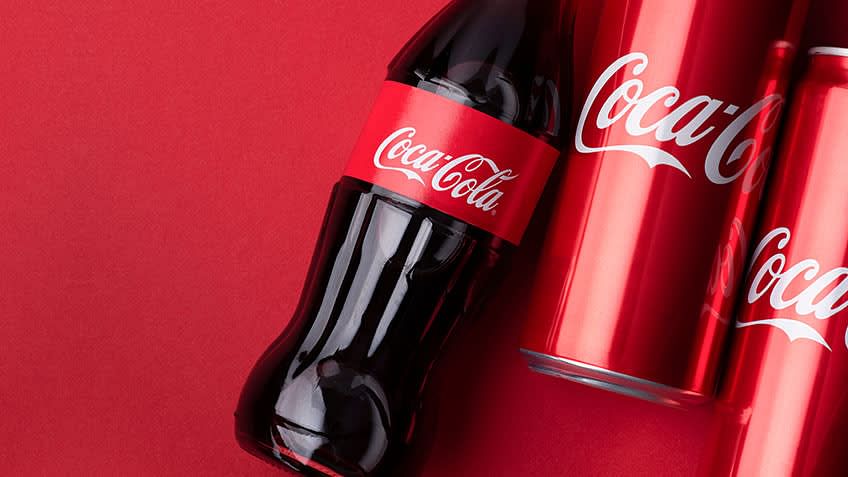
Become an AI-powered Digital Marketing Expert
Coca-cola has colossal brand recognition as it targets every customer in the market. Its perfect marketing segmentation is a major reason behind its success.
- Firstly, the company targets young people between 10 and 35. They use celebrities in their advertisements to attract them and arrange campaigns in universities, schools, and colleges.
- They also target middle-aged and older adults who are diet conscious or diabetic by offering diet coke.
Income and Family Size
It introduces packaging and sizes priced at various levels to increase affordability and target students, middle class, and low-income families and individuals.
Coca-Cola sells its products globally and targets different cultures, customs, and climates. For instance, in America, it is liked by older people too. So, the company targets different segments. It also varies the change accordingly, like the Asian version is sweeter than other countries.
Coca-Cola targets individuals as per their gender. For example, Coca-Cola light is preferred by females, while coke zero and thumbs up are men's favorite due to their strong taste.
Become One of The Highest Paid Digital Marketer
Coca-Cola initially employed an undifferentiated targeting strategy. In recent times, it has started localizing its products for better acceptability. It incorporates two basic marketing channels : Personal and Non-personal.
Personal channels include direct communication with the audience. Non-personal marketing channels include both online and offline media, such as
- Promotion Campaigns
- PR activities
Social Media
Become an ai-powered business analyst.
A uniquely formulated Coca Cola marketing strategy is behind the company's international reach and widespread popularity. The strategy can be broken down into the following:
Product strategy
Coca-cola has approximately 500 products. Its soft drinks are offered globally, and its product strategy includes a marketing mix. Its beverages like Coca-Cola, Minute Maid, Diet Coke, Light, Coca-Cola Life, Coca-Cola Zero, Sprite Fanta, and more are sold in various sizes and packaging. They contribute a significant share and generate enormous profits.
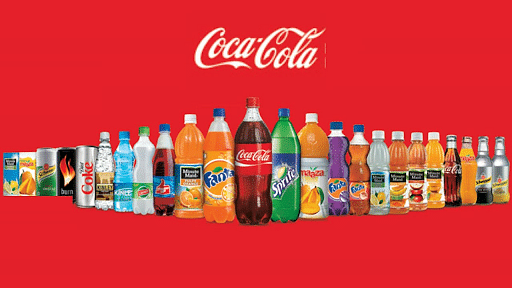
Coca-Cola Products
Master SEO, SEM, Paid Social, Mobile Ads & More
Pricing Strategy
Coca-Cola's price remained fixed for approximately 73 years at five cents. The company had to make its pricing strategy flexible with the increased competition with competitors like Pepsi. It doesn't drop its price significantly, nor does it increase the price unreasonably, as this would lead to consumers doubting the product quality and switching to the alternative.
Place Strategy
Coca-cola has a vast distribution network. It has six operating regions: North America, Latin America, Africa, Europe, the Pacific, and Eurasia. The company's bottling partners manufacture, package, and ship to the agents. The agents then transport the products by road to the stockist, then to distributors, to retailers, and finally to the customer. Coca-Cola also has an extensive reverse supply chain network to collect leftover glass bottles for reuse. Thus, saving costs and resources.
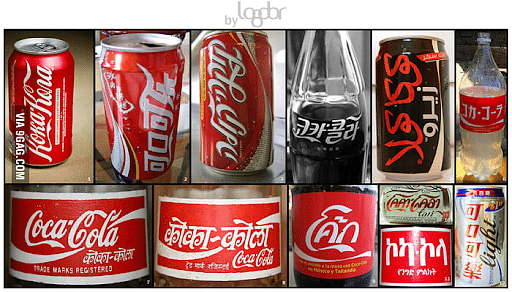
Coca-Cola’s Global Marketing
Promotion Strategy
Coca-Cola employs different promotional and marketing strategies to survive the intense competition in the market. It spends up to $4 million annually to promote its brand , utilizing both traditional and international mediums for advertisements.
Classic Bottle, Font, and Logo
Coca-Cola organized a global contest to design the bottle. The contest winner used the cocoa pod's design, and the company used the same for promoting its shape and logo. Its logo, written in Spencerian script, differentiates it from its competitors. The way Coca-cola uses its logo in its marketing strategy ensures its imprint on consumers' minds.
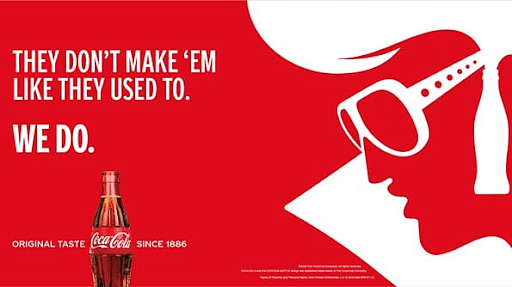
Coca-Cola’s Gripping Advertisements
Localized Positioning
The recent 'Share a coke' campaign, launched in 2018 in almost fifty countries, has been quite a success. The images of celebrities of that region and messages according to the local language and culture of the area target the local market.
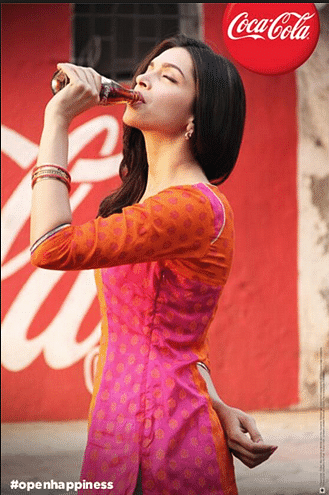
Coca-Cola Advertisement Featuring Celebrities
Sponsorships
The company is a well-recognized brand for its sponsorships, including American Idol, the NASCAR, Olympic Games, and many more. Since the 1928 Olympic Games, Coca-Cola has partnered on each event, helping athletes, officials and fans worldwide.

Coca-Cola as Official Olympics Partner
Learn About the Purdue Digital Marketing Bootcamp
With technological advancement, social media and online communication channels have become the most significant part of the Coca-Cola marketing strategy. It actively uses online digital marketing platforms like Facebook , Twitter, Instagram, YouTube, and Snapchat to post images, videos, and more. The Coca Cola marketing strategy primarily includes SEO , email marketing , content marketing , and video marketing .
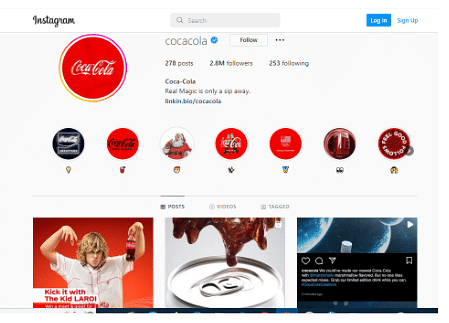
Coca-Cola’s Instagram Posts
Become a millennial Digital Marketer in just 6 months. Enroll now for our IMT Ghaziabad Digital Marketing Program course in collaboration with Purdue University!
Become a Certified Marketing Expert in 8 Months
Good marketing strategies build customer loyalty and contribute to a huge market share. Learn how to boost your brand's market value with the Post Graduate Program in Digital Marketing . Upgrade your skill set and fast-track your career with insights from Purdue University experts.
Our Digital Marketing Courses Duration And Fees
Digital Marketing Courses typically range from a few weeks to several months, with fees varying based on program and institution.
| Program Name | Duration | Fees |
|---|---|---|
| Cohort Starts: | 8 Months | € 1,699 |
| Cohort Starts: | 8 Months | € 999 |
Recommended Reads
Digital Marketing Career Guide: A Playbook to Becoming a Digital Marketing Specialist
A Case Study on Netflix Marketing Strategy
12 Powerful Instagram Marketing Strategies To Follow in 2021
Introductory Digital Marketing Guide
A Case Study on Apple Marketing Strategy
A Complete Guide on How to Do Social Media Marketing
Get Affiliated Certifications with Live Class programs
Post graduate program in digital marketing.
- Joint Purdue-Simplilearn Digital Marketer Certificate
- Become eligible to be part of the Purdue University Alumni Association
Post Graduate Program in Business Analysis
- Certificate from Simplilearn in collaboration with Purdue University
- PMP, PMI, PMBOK, CAPM, PgMP, PfMP, ACP, PBA, RMP, SP, and OPM3 are registered marks of the Project Management Institute, Inc.
Coca-Cola Marketing Case Study
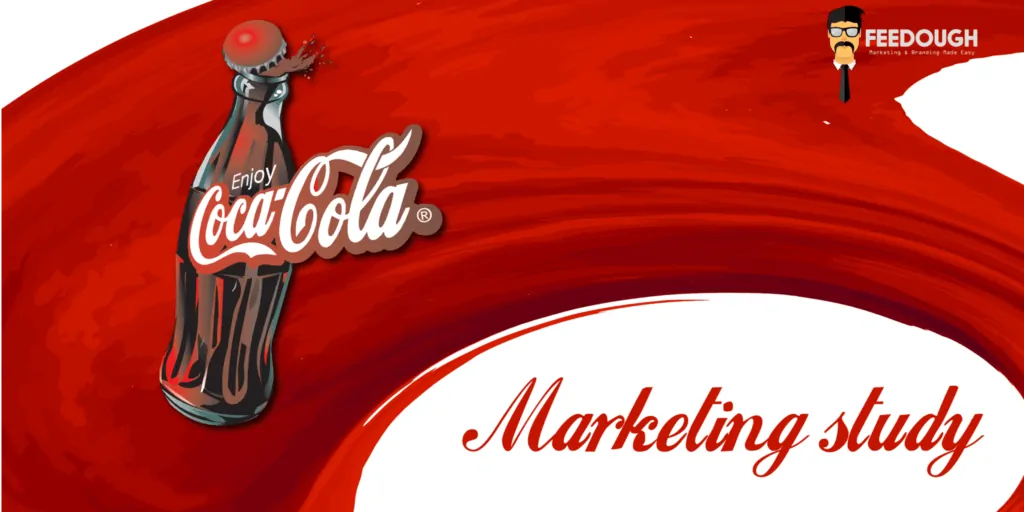
From the star ‘Coca-Cola’ drink to Inca Kola in North and South America, Vita in Africa, and Thumbs up in India, The Coca-Cola Company owns a product portfolio of more than 3500 products . With the presence in more than 200 countries and the daily average servings to 1.9 billion people, Coca-Cola Company has been listed as the world’s most valuable brand with 94% of the world’s population recognizing the red and white Coca-Cola brand Logo . Moreover, 3.1% of all beverages consumed around the world are Coca-Cola products. All this because of its great marketing strategy which we’ll discuss in this article on Coca-Cola Marketing Strategy .
Coca-Cola –
- has a Market capitalization of $192.8 Billion (as of May 2016).
- had 53 years of consecutive annual dividend increases.
- with the revenue of over $44.29 billion, is not just a company but an ECONOMY.
The world knows and has tasted the coca cola products. In fact, out of the 55 billion servings of all kinds of beverages drunk each day (other than water), 1.7 billion are Coca-Cola trademarked/licensed drinks.
Marketing history
Market research in the beginning.
It all started 130 years ago, in 1886, when a Confederate colonel in the Civil War, John Pemberton, wanted to create his own version of coca wine (cola with alcohol and cocaine) and sent his nephew Lewis Newman to conduct a market research with the samples to a local pharmacy (Jacobs pharmacy). This wasn’t a new idea back then. The original idea of Coca wines was discovered by a Parisian chemist named Angelo Mariani.
Pemberton’s sample was sold for 5 cents a glass and the feedback of the customers was relayed to him by his nephew. Hence, by the end of the year, Pemberton was ready with a unique recipe that was tailored to the customers taste.
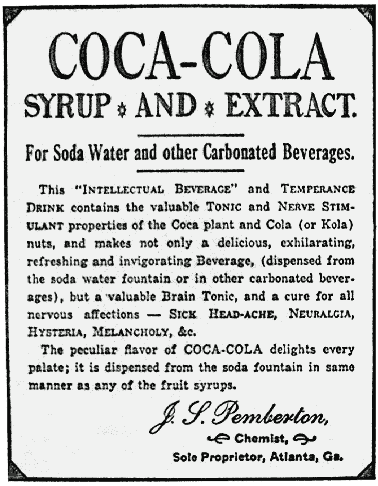
Marketing Strategy In The Beginning
Pemberton soon had to make it non-alcoholic because of the laws prevailing in Atlanta. Once the product was launched, it was marketed by Pemberton as a “Brain Tonic” and “temperance drink” (anti-alcohol), claiming that it cured headaches, anxiety, depression, indigestion, and addiction. Cocaine was removed from Coke in 1903.
The name and the original (current) Trademark logo was the idea of Pemberton’s accountant Frank Robinson, who designed the logo in his own writing. Not changing the logo till date is the best strategy adopted by Coca-cola.
Soon after the formula was sold to Asa G Candler (in 1889), who converted it into a soda drink, the real marketing began.
Candler was a marketer. He distributed thousands of complimentary coca-cola glass coupons, along with souvenir calendars, clocks, etc. all depicting the trademark and made sure that the coca cola trademark was visible everywhere .
He also painted the syrup barrels red to differentiate Coca-Cola from others.
Various syrup manufacturing plants outside Atlanta were opened and in 1895, Candler announced about Coca-Cola being drunk in every state & territory in the US.
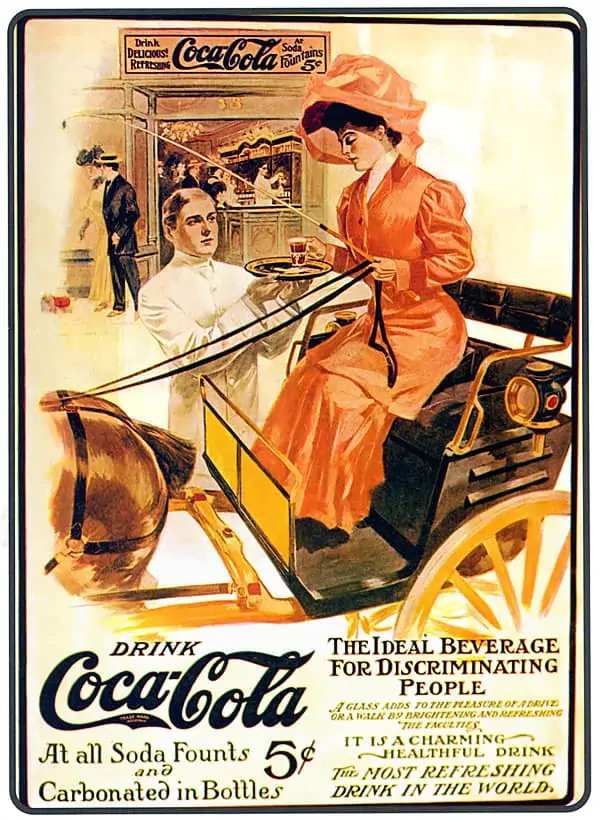
The Idea Of The Bottle
During Candler’s era, Coca-Cola was sold only through soda fountains. But two innovative minds, Benjamin F. Thomas and Joseph B. Whitehead, secured from Candler exclusive rights (at just $1) for bottled coca cola sales.
But Coca-Cola was so famous in the US that it was subjected to imitations. Early advertising campaigns like “Demand the genuine” and “Accept no substitutes” helped the brand somewhat but there was a dire need to differentiate. Hence, in 1916, the unique bottle of Coca-Cola was designed by the Root Glass Company of Terre Haute, Indiana. The trademark bottle design hasn’t been changed until now.
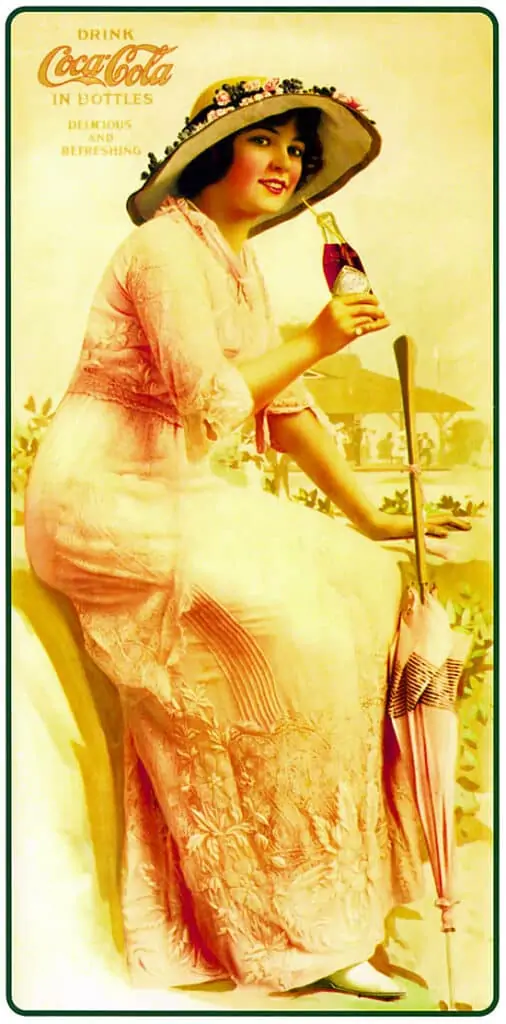
Coca-Cola Worldwide
In 1919, Candler sold the company to Robert Woodruff whose aim was to make Coca-Cola available to anyone, anytime and anyplace. Bottling plants were set up all over the world & coca cola became first truly global brand.
Robert Woodruff had some other strategies too. He was focused on maintaining a standard of excellence as the company scaled. He wanted to position Coca-Cola as a premium product that was worthy of more attention than any of its competitors. And he succeeded in it. Coca-Cola grew rapidly throughout the world.
Coca-Cola Marketing Strategies
The worldwide popularity of Coca-Cola was a result of simple yet groundbreaking marketing strategies like –
Consistency
Consistency can be seen from the logo to the bottle design & the price of the drink (the price was 5 cents from 1886 to 1959). Coca-Cola has kept it simple with every slogan revolving around the two terms ‘Enjoy’ and ‘happiness’.
From the star bottle to the calendars, watches and other unrelated products, Candler started the trend to make Coca-Cola visible everywhere. The company has followed the same branding strategy till now. Coca-Cola is everywhere and hence has the world’s most renowned logo.
Positioning
Coca-Cola didn’t position itself as a product. It was and it is an ‘Experience’ of happiness and joy.
Franchise model
The bottling rights were sold to different local entrepreneurs , which is continued till now. Hence, Coca-cola isn’t one giant company, it’s a system of many small companies reporting to one giant company.
Personalization & Socialization
Unlike other big companies, Coca-Cola has maintained its positioning as a social brand. It talks to the users. Coca-Cola isn’t a company anymore. It’s a part of us now. With its iconic advertising ideas which include “I’d Like to Buy the World a Coke” & “Share a Coke”, it has maintained a special spot in the heart of its users.
Diversification
Coca-Cola, after marking its presence all over the world, took its first step towards diversifying its portfolio in 1960 by buying Minute Maid. It now operates in all but 2 countries worldwide with a portfolio of more than 3500 brands.
Coca-Cola Marketing Facts
- Logo & bottle design hasn’t changed since the start.
- During its first year, Coca-Cola sold an average of 9 drinks a day.
- Norman Rockwell created art for Coke ads.
- Coke has had a huge role in shaping our image of Santa Clause.
- In the 1980s, the company attempted a “Coke in the Morning” campaign to try to win over coffee drinkers.
- In 1923, the company began selling bottles in packages of six, which became common practice in the beverage industry.
- Recently, it was in the news that Verizon acquired Yahoo for around $5 billion which is more or less the same amount the Coca-Cola Company spends on its advertisements.
- The number of employees working with the Coca-Cola Company (123,200 to be exact) is more than the population of many countries.
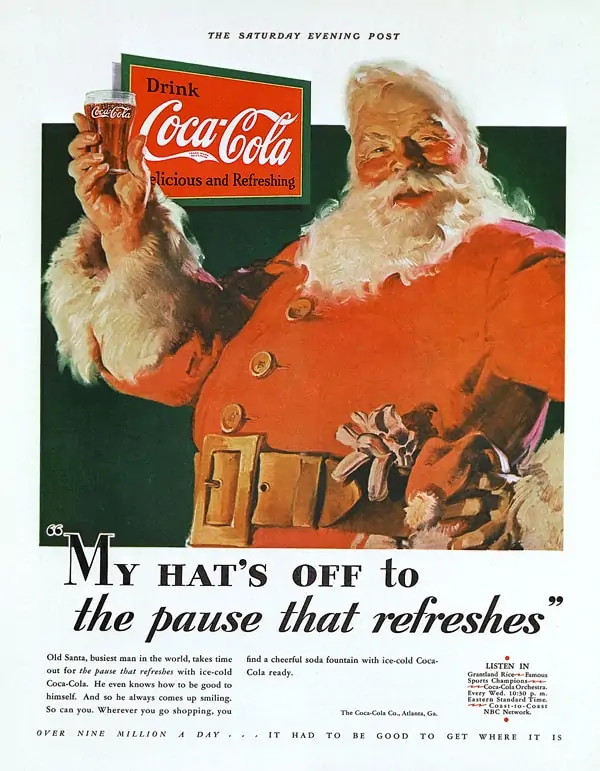
Go On, Tell Us What You Think!
Did we miss something? Come on! Tell us what you think about Coca Cola Marketing Case Study in the comment section.
A startup consultant, digital marketer, traveller, and philomath. Aashish has worked with over 20 startups and successfully helped them ideate, raise money, and succeed. When not working, he can be found hiking, camping, and stargazing.
Related Posts:
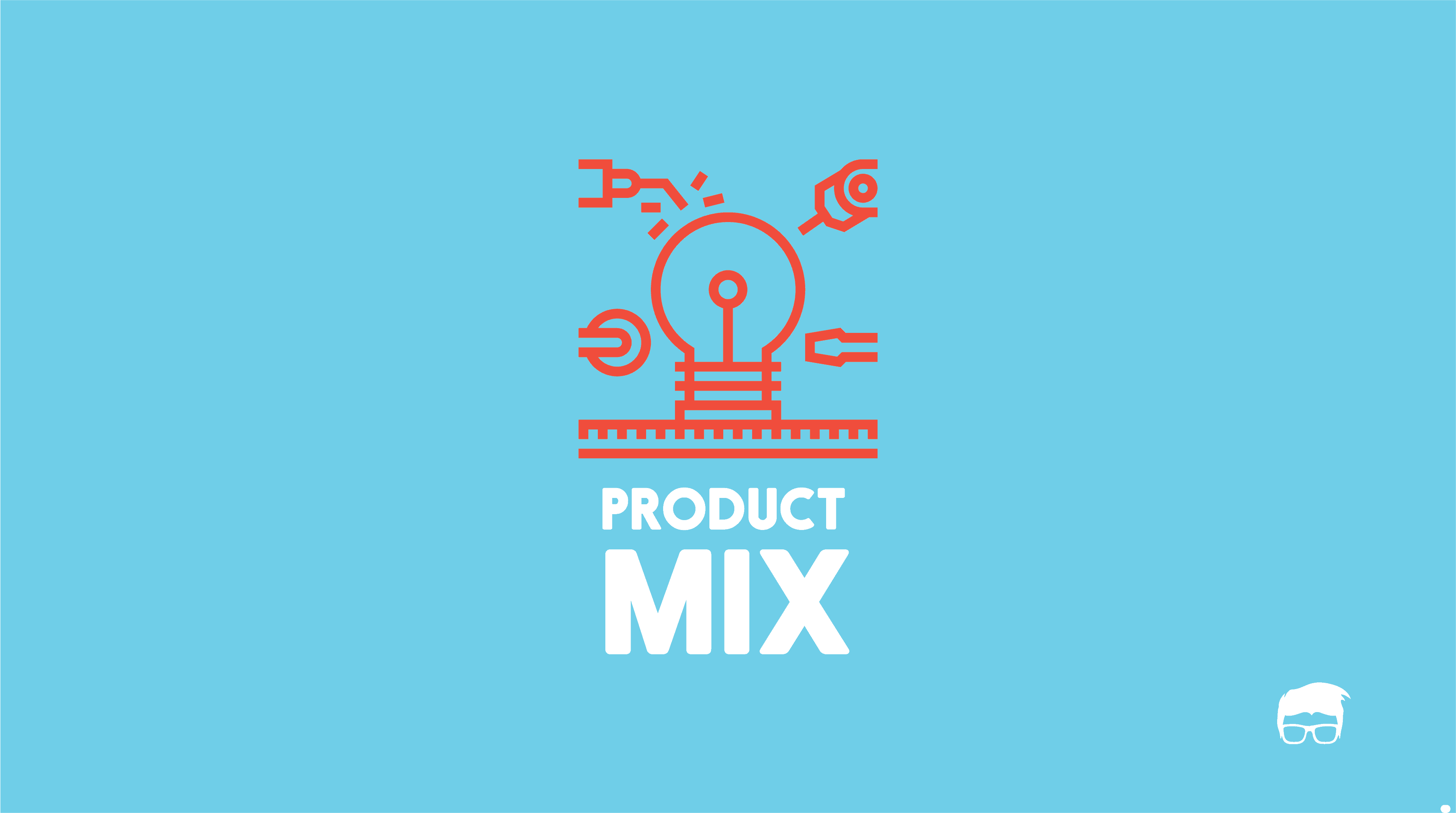

How Coca-Cola became one of the most successful brands in history
Table of contents.
Coca-Cola has an impressive track record of innovation which has helped propel the company to become one of the most successful brands in history. Through skillful advertising efforts, Coca-Cola is widely recognized as a symbol of American culture through its influence on politics, pop culture, and music around the globe.
Key statistics and facts about The Coca-Cola Company:
- Owns 43.7% of the US carbonated soft drinks market
- Net operating revenue of $38.7B
- Present in more than 200 countries and territories
- Employs over over 700,000 along with its bottling partners
- Ranked #93 in the Fortune 500
- Μarket value of $259.77 billion as of February 2023
Who owns Coca-Cola?
There is no sole owner of Coca-Cola as it is a publicly listed company. However, the largest shareholder is Warren Buffett. Read on as we dive into the history of Coca-Cola's owners and much more below!
{{cta('eacab09c-3f45-4c05-84ef-a8bdc5ba474b')}}
The history of The Coca-Cola Company
How it all started.
The story of The Coca-Cola Company had humble beginnings in the late 1800s, in Atlanta, Georgia. Dr. John Pemberton, a local pharmacist, had developed a recipe for a sweet syrup that was originally advertised to cure headaches. It was eventually mixed with carbonated water to create a fizzy drink that was served at a soda fountain in Jacobs’ Pharmacy. The first glass of Coca-Cola was served on May 8, 1886. In the first year, Pemberton served approximately nine drinks per day which were sold for 5 cents a glass.
While the ingredient list today is a highly guarded secret, it is well known that the original version contained extracts from the Coca leaf and Kola nuts for caffeine. The combination of these two ingredients is where the name comes from. Dr. Pemberton’s partner and bookkeeper, Frank M. Robinson, felt that spelling the name with double “C’s” would look better in advertising. So, he scripted out the logo which even today displays Mr. Robinson’s unique handwriting.
Dr. Pemberton didn’t realize the potential of his new product. He took on several partners and sold portions of his business to various owners. Sadly, Dr. Pemberton died just two years after the creation of Coca-Cola. Prior to his death, he sold his remaining interests to an Atlanta businessman, Asa Griggs Candler. Candler knew there was something special about this new product, but little did he know that his $2,300 investment (roughly $67,000 today) would be the start of one of the most powerful brands on the planet.
Birth of The Coca-Cola Company
The Coca-Cola Company was officially founded by Asa Candler in 1892. It didn’t take long for the Coca-Cola product to quickly spread outside of Georgia and across the nation. By 1895, Coca-Cola was being sold in every state of the union. In 1919, the company was sold to Ernest Woodruff. Woodruff's sons would continue to run the company for many years, transforming the company into a major international brand. The Coca-Cola Company was officially listed on the New York Stock Exchange in 1919 under the ticker symbol KO.
International expansion of The Coca-Cola Company
The first export of Coca-Cola was to Cuba in 1899. It wasn’t until the 1920s, that international expansion of the brand began to take off. During World War II, Coca-Cola’s President, Robert Woodruff, wanted to ensure that US service members stationed all over could have the comforts of home and pledged to transport Coca-Cola to the various bases in the European and Pacific theatres on the company’s dime. This introduction of the Coca-Cola product increased international demand. With people all over the world craving a taste of American culture, Coca-Cola began establishing partnerships with bottling companies and distributors all over the world. Today, the brand operates in more than 200 countries and territories.
Early competition
In the early years, Coca-Cola had a lot of competition. In fact, the late 1800s and early 1900s was the most active period in the development of new soft drinks. Some of these companies went out of business or were bought out by other larger companies. However, many of these brands are still in existence today as more novelty brands and hold a very small percentage of the market.
The most prominent competitors to Coca-Cola throughout its history have been Pepsi and Dr. Pepper. They were both created around the same time as Coca-Cola (Pepsi in 1898 and Dr. Pepper in 1885). Over time, these three giants bought up many of the smaller beverage companies. For example, Vernor’s Ginger Ale, Hires Root Beer, and Royal Crown Cola still exist but are now owned by Dr. Pepper.
The Coca-Cola beverage was created in 1886 by Dr. John Pemberton, a pharmacist from Atlanta, Georgia. The recipe was purchased by Asa Griggs Candler and The Coca-Cola Company in 1892. The brand quickly became popular and was sold all over the United States. By the early 20th century, Coca-Cola began a rapid expansion across the globe.
The Coca-Cola system- a global franchise distribution network
The Coca-Cola Company’s rapid expansion around the world can be attributed to its unique franchise distribution system (known as the Coca-Cola System ) that they have operated since 1889. Coca-Cola produces syrup concentrate which is then sold to various bottlers around the world. This helps the company maintain control over its top-secret recipe without the burden of having to run many of the independent bottling facilities.
The Coca-Cola System is a network of over 900 bottling plants that produce 2 billion servings of Coca-Cola every day. The bottlers each hold contracts that allow them to exclusively operate in a predetermined territory. This reduces the need for the competition from multiple companies that sell the same product.
These distributors handle all aspects of the production and distribution process including mixing the syrup with carbonated water and sweeteners, placing the finished product in cans or bottles, and distributing Coca-Cola to supermarkets, vending machines, restaurants, and movie theaters. Although Coca-Cola produces the main syrup, the franchise companies also control the soda fountain business in their territory.
The exception to this model is the North American market where The Coca-Cola Company directly owns most of the bottling and distribution. Outside of the United States, Coca-Cola has continued to encourage the consolidation of its various bottling companies. Over time, Coca-Cola has acquired a percentage of ownership in many of the companies in the Coca-Cola System.
Top 5 independent bottling partners, representing 40 percent of the Coca-Cola System distribution network:
- Coca-Cola FEMSA (Latin America)
- Coca-Cola Europacific Partners, plc (Western Europe, Australia, Pacific, and Indonesia)
- Coca-Cola HBC AG (Eastern Europe)
- Arca Continental (Latin America and North America)
- Swire Beverages (Asia and parts of North America)
Here's an example video from Coca-Cola HBC AG explaining their business model:
The Coca-Cola Company leverages a network of independently owned and operated bottlers around the world. This has enabled the company to quickly expand without having to invest billions of dollars into building facilities and navigating international rules and regulations unique to each region.
Evolution of the Coca-Cola product
The formula for Coca-Cola has undergone a few changes since its creation. Some of these changes were driven by necessity. Some were an attempt to reduce costs or gain market share. While the brand does not make changes often, some have been better received than others.
Removal of cocaine
During the late 19th century, there were many Cocoa-based beverages available on the market. At the time, drugs like cocaine and opium were perfectly legal and used quite frequently for medicinal purposes. Since Coca leaves were used to make Coca-Cola, there were small quantities of cocaine that could be found in the drink.
The public eventually became aware of the addictive properties of these substances, so Coca-Cola was pressured to remove this drug from its list of ingredients. The Coca-Cola Company made steps to gradually phase out sources of cocaine from its production until it was finally eliminated in 1929.

On April 23, 1985, The Coca-Cola Company took a huge risk that shocked the world. They announced that they would be changing the formula of their world-famous soft drink. Despite its massive success, the company had been losing ground to one of its main competitors, Pepsi. Pepsi’s success wasn’t just in the United States. They were quickly expanding into markets that were once considered untouchable. At the height of the Cold War, Pepsi became the first Western product to be permitted in the Soviet Union .
Based on surveys and taste tests, consumers seemed to prefer the sweeter taste of Pepsi-Cola. So, Coca-Cola set out to rework the formula to improve its ability to compete. According to Coca-Cola’s website, their goal was to “re-energize the Coca-Cola brand and the cola category in its largest market, the United States”. After receiving positive feedback from nearly 200k customers in taste tests, New Coke was released to the market.
The public’s response to the new version of their product was outrage. Unfortunately, Coca-Cola miscalculated its customer’s bond with the original brand. Massive protests were staged and the company was flooded with thousands of angry phone calls and letters. The backlash was so fierce that it forced the company to revert back to the old formula after only 79 days on the market, branded as Coca-Cola classic.
This graph demonstrates PepsiCo’s rapid expansion of market share from 1970 to 1990 and subsequent fall.
Coca-Cola Zero Sugar

While Coca-Cola has vowed not to make any changes to its original product, the company plans to update the recipe and packaging for their popular zero sugar variation, Coca-Cola Zero Sugar . The company has been cautious in its promotion of the new version as to not create a blowback like the 1985 New Coke fiasco. Coca-Cola has reiterated that the new version will not be a major overhaul, rather an “optimization of flavors and existing ingredients”. The rollout is expected to hit the US market by August 2021.
Sweetener changed to high fructose corn syrup
Traditionally, the Coca-Cola recipe called for cane sugar as the primary sweetener. During the 1970s, the United States saw a massive increase in corn production. This forced the prices of corn to drop significantly. In addition, corn was heavily subsidized by the US government. This made sweeteners like high fructose corn syrup more affordable.
In an attempt to reduce costs, Coca-Cola slowly started substituting cane sugar for high fructose corn syrup during the 1980s. The transition took place over the course of approximately 5 years.
Today, cane sugar is still used in the production of Coca-Cola in certain regions of the world. The most popular example is Coca-Cola produced in Mexico. This version of Coca-Cola is still made with cane sugar. Some critics argue that “Mexican Coke” has a flavor that is closer to the original formula.
In 1935, Coca-Cola was certified as kosher after the company replaced the source of glycerin used in production . This was originally derived from beef tallow but was replaced with a plant-based version. However, with the change of sweetener in the 1980s to high fructose corn syrup, its kosher status was removed. Today, bottlers in markets with large Jewish populations will temporarily substitute high fructose corn syrup during Passover to obtain Kosher certification.
Recipe and flavor variations
Despite the utter failure of New Coke in 1985, The Coca-Cola Company has introduced new flavors over time in addition to Coca-Cola classic.
Some consumers avoided Coca-Cola classic because of the high sugar or caffeine content. In 1982, the company released a diet version of their product for consumers who were concerned about consuming too much sugar. A caffeine-free version was also introduced a year later.
The company has also tried different flavor combinations. The first was Coca-Cola Cherry in 1985 which was a huge success and remains popular today. Other flavors included lemon, lime, vanilla, orange, ginger, cinnamon, and coffee. Many of these were attempts to bring local flavors to international markets.
Coca-Cola has achieved enormous amounts of growth by tailoring its products to local tastes and demands. They have also been able to reduce production costs by substituting expensive ingredients such as cane sugar for lower-cost alternatives. Not every change has been well received by the public. Coca-Cola infamously changed their original recipe to replace it with “New Coke”. This change faced fierce backlash and forced the company to bring back the original product after only 79 days on the market.
Coca-Cola Growth Strategy
The company has outlined a list of key objectives that they plan to execute in the coming years to spur additional growth. This strategic plan is intended to guide the company in refocusing efforts and being more intentional with its actions.
Focus on developing markets
Coca-Cola has identified that there is huge growth potential in the developing world. Seventy percent of all beverages being consumed in the developed world are commercialized compared to only 30 percent for the developing world. Considering the developing world contains 80 percent of the world's population, growth is expected to be exponentially higher.
One identified area of opportunity is brand diversification. While Coca-Cola has a strong foothold globally, this is only due to its strong presence in major markets. Outside of sparkling water, Coca-Cola is trailing competitors. The focus will be on gaining momentum in other beverage categories through the experimentation of new products.
Brand portfolio optimization
Bigger isn’t always better. The Coca-Cola Company is realizing that its efforts may be spread across too many individual brands. Their goal is to rebalance their portfolio and consolidate products into fewer master brands. They have already reduced this number from approximately 400 to 200. By having fewer master brands, they can better focus their efforts.
Networked organization
Operating a large corporation comes with challenges. In many cases, there can be inefficiencies and duplicated efforts. Coca-Cola plans to address this by reorganizing its support and operational teams to provide better support and work more effectively.
Brand building
The company plans to deliver world-class marketing through targeted resource allocation. The goal is to be more intentional with the way advertising and marketing investments are made.
Coca-Cola has a goal to increase the frequency that new or existing consumers drink their products. To do this, the company has set targets to significantly increase innovation by bringing more trial products and projects into the pipeline. The goal is to increase this by 40 percent over 2020.
Digital transformation
Coca-Cola understands that data is a powerful tool. They are in the process of undergoing a digital transformation to help the company operate more effectively and leverage data to drive decision-making.
Revenue growth management
With this new data and digital tools available, the company can place a renewed focus on which areas have the most potential for growth. They will focus on understanding which markets, consumers, product lines, and competitors should be addressed.
The Coca-Cola Company is dedicated to growing the business through a skillfully designed and executed strategic plan. Their long-term goals are to focus on expanding the commercial beverage industry in developing countries. They also plan to optimize their product line by reducing the number of master brands, creating new innovative products, changing their internal operations teams to streamline processes, and better leverage data.
The power of advertising- Coca-Cola becomes a household name
A big part of Coca-Cola’s success over the years has been its focus on innovative marketing and advertising campaigns. In 2020, Coca-Cola was ranked as the 6th most powerful brand in the world. This accomplishment didn’t come overnight. Over the years, Coca-Cola has had to work diligently to evolve and bring fresh, new ideas to marketing and advertising.
Large contributions to advertising
Even early on, Asa Griggs Candler spent a considerable amount of money on advertising. His original budget for advertising was $11,000 (over $300,000 in today’s money). By 1900, the budget increased ten-fold to $100,000 and again to $1 million by 1910.
Large advertising budgets are important when a new brand is getting established. As a company grows and becomes well-known, they typically scale back on their advertising budget since most consumers recognize the brand. Coca-Cola, however, has continued to keep the pressure on its competitors. Today, the company spends about 10 percent of its revenue on advertising and marketing. This equates to approximately $4 billion in commercials, print advertising, sponsorships, and other promotional merchandise.
Focus on the brand and human connection
Much of Coca-Cola’s advertising success comes from the way they present their brand. Instead of focusing on the actual product, they emphasize the feeling and camaraderie of making the brand part of one’s identity. Their advertisements are intended to make people feel good about themselves and want to be a part of the experience.
Human connection is an important part of the brand message. One great example of this was the “Hilltop” commercial from 1971 that featured people from different cultures singing “I’d like to buy the world a Coke”. This showed the Coca-Cola brand as one that was intended to unite people around the world.
Celebrity endorsements
Celebrity endorsement is a way to help a brand stand out, especially when targeting specific groups. For example, sports fans will be more likely to purchase a product if their favorite athlete promotes the brand. Over the years, Coca-Cola has been endorsed by numerous high-profile celebrities, athletes, and pop culture icons.
Hilda Clark, an American model, and actress was the first celebrity to endorse the brand in 1900 and was featured in early advertisements. Since then, Coca-Cola has received endorsements from many big-name celebrities such as Ray Charles, Aretha Franklin, Magic Johnson, and Elvis Presley.
Coca-Cola in pop culture
The Coca-Cola brand has been a prominent part of American culture for decades. Coca-Cola has skillfully attached itself to key historical events, music, movies, and major holidays.
Coca-Cola and many of its other brands have been featured in numerous films and television programs. For a short time, Coca-Cola even owned Columbia Pictures (from 1982 to 1989) and inserted Coke products into many of its productions. A few examples include:
- The 1933 film King Kong displays a Times Square billboard advertisement in several of the scenes.
- Coca-Cola products being used in the 1982 film E.T. the Extra-Terrestrial.
- The modern TV series Stranger Things which takes place in the 1980s displays and makes reference to New Coke.
The Coca-Cola Company has also made its way into music across the globe. Elvis Presley promoted Coca-Cola during his last tour in 1977. The UK sensation, The Beatles, made mention of Coca-Cola in a line of their hit song “Come Together”. In addition to lyrical references, the brand has featured musical superstars such as David Bowie, Elton John, and Whitney Houston in Diet Coke commercials.
The Coca-Cola brand has also cleverly attached itself to popular holidays. Some of its most successful campaigns have been displayed over the Christmas holiday. One of the most iconic campaigns started in 1931 with illustrations of St. Nicholas drinking a Coca-Cola. Many credit Coca-Cola with inspiring the modern-day version of Santa Clause.
Clever campaigns and promotions
Coca-Cola has been one of the top innovators in the advertising space. On many occasions, they have used never before seen tactics that both surprised and delighted consumers. Creating an additional buzz around their advertising campaigns helps to amplify whom the campaign reaches directly.
During the 2012 NFL Superbowl, Coca-Cola decided to take a non-traditional approach. The Superbowl is one of the most sought-after advertising opportunities. Each year, approximately 95 million people tune in to watch the championship game. Typically, major brands spend over $5 million for a single 30-second commercial. With the rise of cell phones and other mobile devices, Coca-Cola knew that consumers would be juggling multiple devices during the game. So, they created a family of animated polar bears that would react to the game in real-time on digital media banners and a microsite. The bears would laugh, respond to audience tweets, and make faces. The campaign was a huge success. During the game, over 9 million viewers spent an average of 28 minutes engaging with and watching the polar bears in action.
In 2011, Coca-Cola decided to take a personalized approach to advertise in Australia with their Share a Coke campaign. They selected 150 of the most popular names and printed them on the side of their bottles along with the message “Share a Coke with…”. The campaign encouraged people to share a bottle of Coke with a friend or tag them in a social media post with the hashtag #shareacoke. The campaign was so successful that it was expanded to over 80 countries and led to Coca-Cola’s first sales growth in over 10 years.
Collectible memorabilia
Coca-Cola has created and distributed numerous pieces of branded memorabilia that are highly sought after by collectors including toys, clothing, antique bottles, signs, household items, and old vending machines. The collectible nature of these products has nostalgia of traditional Americana and has further helped to amply the prestige and cultural connection of Coca-Cola to US history. Rare and well-preserved items can fetch tens of thousands of dollars.
The Coca-Cola Company has created one of the most powerful and well-known brands in the world. Over the years, they have embedded themselves as an icon of American culture through music, television, and films. The company spends a significant portion of its annual revenue on advertising efforts including television commercials, social media, and other advertising.
Growth through mergers, acquisitions, and partnerships- becoming an unstoppable force in the food and beverage industry
While The Coca-Cola Company is known for its main products such as Coca-Cola and Diet Coke, the company owns, produces, and distributes over 500 individual brands worldwide. Some of these brands are a result of new products that they created. Others were obtained through mergers, acquisitions, and special partnerships with other major companies.
Key mergers and acquisitions
- 1960 - Coca-Cola acquires Minute Maid, a producer of juices, soft drinks, and other beverages such as the popular Hi-C brand.
- 1993 - When Coca-Cola was struggling to gain a foothold in the Indian market, they purchased the popular local brand, Thums Up. Their business now makes up over 40 percent of the cola business in India.
- 1995 - Acquisition of Barq’s which produces a line of root beers and cream sodas.
- 1999 - Coca-Cola purchased 50 percent of Inca Kola for $200 million and took control of its marketing and bottling operations.
- 2001 - Odwalla, a brand of fruit juices, smoothies, and bars was acquired. This company was discontinued in 2020.
- 2007 - Coca-Cola acquired Fuze Beverage, a producer of teas and fruit drinks that were infused with vitamins and minerals.
- 2008 - The company purchased 40 percent of Honest Tea, a popular iced tea producer. The remaining shares were purchased in 2011 giving Coca-Cola full ownership.
- 2013 - Coca-Cola purchased the coconut water company ZICO.
- 2014 - 16.7 percent of the energy drink manufacturer, Monster Beverage, was sold to Coca-Cola in exchange for a long-term strategic partnership.
- 2016 - Coca-Cola purchased a portion of Chi Limited, a major distributor of snacks, food, and beverage products in Nigeria. The remaining shares were acquired in 2019.
- 2017 - Topo Chico, a Mexican sparkling water brand was acquired by Coca-Cola.
- 2018 - Coca-Cola purchased Costa Coffee making it the owner of the second-largest coffeehouse chain in the world after Starbucks Coffee.
- 2018 - Organic & Raw Trading Co., the Australian producer of MOJO kombucha was acquired.
Special partnerships
In addition to owning many brands, The Coca-Cola Company has created many successful strategic partnerships that have allowed Coca-Cola to grow exponentially.
One of the most famous partnerships is with McDonald’s. When McDonald’s was just getting started in 1955, it needed a beverage distributor. The two companies struck a deal for Mcdonald's to exclusively sell only Coca-Cola products. McDonald’s eventually grew to become the largest restaurant chain (by revenue) and Coca-Cola products are served in nearly 40,000 of their locations around the world. Other notable restaurant chains that carry Coca-Cola products include Burger King, Chili’s, Chipotle, and Domino’s Pizza.

Coca-Cola has also partnered with numerous venues around the world to sell only Coca-Cola products in their stadiums, theatres, and concert halls. The Coca-Cola Company is a major sponsor of the Olympic Games. In 2017, the company signed a deal with Major League Baseball in which they agreed to drop their competitor Pepsi and only promote Coke products.
Most of Coca-Cola’s growth has come from strategic mergers and acquisitions of companies all over the world. They have been able to expand into new markets by buying companies that already dominate the specialty or space. The company has also developed strategic partnerships with other large companies to exclusively sell Coca-Cola products.
Controversy, regulatory issues, and criticism
Despite the company’s overwhelming success, Coca-Cola has faced a lot of criticism throughout its history. There are many opinions related to the impacts that The Coca-Cola Company has on the environment and consumers alike.
Health concerns
It’s no secret that Coca-Cola is a sugary drink. According to the Centers for Disease Control (CDC), half of all Americans will drink at least one sugary beverage each day. This massive consumption of sugar is leading to an epidemic of conditions such as type 2 diabetes and obesity. The World Health Organization (WHO) recommends that adults consume no more than 6 tsp of sugar each day. A single 12oz can of Coca-Cola contains nearly twice this amount.
With Coca-Cola being the leading company in the food and beverage industry, they have received a lot of negative attention directed towards their contribution to this serious problem.
The company has responded by producing sugar-free or reduced-calorie beverages. They have also expanded their product lines to include healthy alternatives like coconut water.
Environmental issues
Coca-Cola has been identified as the single producer of plastic waste in the world. Much of this plastic is not discarded properly and ends up in the oceans. This has contributed to the ecological disaster due to single-use plastics. This has captured the attention of environmental protection groups who claim that Coca-Cola isn’t doing enough to work toward a reasonable solution. A report from Greenpeace estimates that the company produces over 100 billion plastic bottles every year with no obvious goal to reduce single-use plastic waste.
Coca-Cola has made some efforts to reduce its environmental impact. First, they redesigned their bottles to use less plastic (a process called “lightweighting”). While this does reduce the amount of plastic used in production, it does not reduce the number of bottles that end up in landfills or the ocean. They have also introduced their “PlantBottle” which is made from plant-based materials.
While these are steps in the right direction, most environmental groups question whether these efforts are enough. Coca-Cola appears to be spending large amounts of money lobbying politicians around the world to block legislation that would encourage more environmentally friendly manufacturing. They have also been accused of spending a considerable amount of money on “green marketing” without efforts to back up their claims.
Over the years, The Coca-Cola Company has been the center of controversy due to environmental impact and health concerns due to their products. Coca-Cola has responded by providing low-calorie, sugar-free, and healthy alternatives. They have also worked to reduce their plastic use and seek alternatives as they are the single largest contributor to single-use plastic waste.
Coca-Cola's social media strategy

The Coca-Cola Company is a social media powerhouse with millions of followers across the globe. The company is very intentional with its use of social media platforms and leverages them to drive brand awareness and interaction with customers. There are several key components that have made Coca-Cola’s social media strategy so successful.
Positivity
In 2018, Coca-Cola made a commitment to become the ‘most optimistic brand on social media'. They launched their #RefreshtheFeed campaign in which they completely deleted all of their social media content and started fresh. Consumers embraced this new positive approach and encouraged even more followers who wanted to enjoy the feel-good vibes of their social media posts.
Leverage consumers to create content
While Coca-Cola’s marketing team creates a lot of content for their online platforms, they have successfully leveraged their millions of followers to create content on behalf of the brand. They have used creative hashtag-based campaigns to encourage consumers to post Coca-Cola-themed posts for their friends and family to see. One of the most successful was the #shareacoke campaign which reversed a 10-year stagnant sales record.
Attachment to social issues
The company has a stringent social media policy to ensure that content aligns with the company’s values. In July 2020, Coca-Cola decided to join many other major brands in temporarily halting social media posts and advertisements for a minimum of 30 days. This decision came as a result of concerns about growing hate speech and misinformation on social networks. They’ve regularly supported important civil rights and other social issues over the past few decades which helps consumer groups connect with the brand.
Coca-Cola website
The Coca-Cola Company’s main company website contains various resources for consumers, vendors, and investors. The information included in the website discusses the company’s history, its brands around the world, career opportunities, media center, and investor relations.
According to SimilarWeb, the site is ranked 10th in the Food & Beverage category and receives about 1.8 million visitors each month.
The Coca-Cola Company’s YouTube channel is a platform that is used to post promotional videos and other advertisements from all over the world. The channel was started in 2006, has 3.6 million subscribers, and has nearly 3.5 billion views. About 8 percent of their website traffic comes from YouTube.
Coca-Cola’s LinkedIn account has over 6 million followers. The company uses this platform to post company updates for the business community. It is also used to promote job openings and attract top talent from the LinkedIn community.
Twitter is one of Coca-Cola’s most powerful social media accounts. Their Twitter account ( @CocaCola ) was started in 2009 and has posted nearly 300,000 tweets to its 3.3 million followers. Most of the tweets are short inspirational or funny messages to enhance daily brand awareness or encourage engagement. Coca-Cola’s Twitter account generates 62 percent of the traffic to their website.
Coca-Cola’s Instagram account has 2.8 million followers. The account is mostly used to post promotional stories on the platform.
Coca-Cola’s Pinterest account is used to post drink and food recipes and promote Coca-Cola products like customizable Coke bottles. Their account has about 30,000 followers and receives over 10 million views each month.
With over 105 million followers, Coca-Cola’s Facebook account is massive. It’s the 5th most-followed account on the social media platform, only behind Facebook itself, Samsung, Cristiano Ronaldo, and Real Madrid CF. The site is used to post videos and promotional content in many different languages for their followers.
So, Why is Coca-Cola so Successful?
Few companies can boast the tremendous success and growth that The Coca-Cola Company has enjoyed for over 135 years. This accomplishment can be attributed to industry-leading advertising, innovation of their products, and delivering a positive brand message. Let's take a look at what makes Coca-Cola so successful!
Recap: growth by the numbers
| Year |
|
|
| Revenue | $38.7B | $24.0B |
|
| $59.73 | $24.13 |
| Employee Count (including bottling partners) | 700,000 | 71,000 |
| Global Market Share | 48.6% | 45% |
Key takeaways
- Coca-Cola has leveraged a network of independent bottlers around the globe to aid in rapid expansion. These distributors have territorial rights which help prevent competition and price wars.
- The Coca-Cola Company has made changes to its main product over the years but learned a very valuable lesson with the introduction of New Coke in 1985. The launch was a disaster and faced a fierce backlash from consumers who demanded the return of the original product.
- Coca-Cola’s long-term strategic plan includes focusing on the developing world where consumer beverages have a lot of growth potential, optimizing the number of master brands, revamping their operational network, and leveraging technology and data.
- Coca-Cola’s advertising focuses on creating human connections and making people feel good. They have led the advertising world in cutting-edge approaches to marketing that have never been seen before.
- Coca-Cola has inserted its brand and products in films and television to become an easily identifiable American icon.
- Acquisition of other companies has been a major part of Coca-Cola’s expansion efforts giving them the ability to quickly reach into new markets or acquire existing popular products.
- The Coca-Cola company has been the target of criticism due to its potential negative impact on consumer health and the environment.
- Work & Careers
- Life & Arts
Case study: Coca-Cola
Try unlimited access only $1 for 4 weeks.
Then $75 per month. Complete digital access to quality FT journalism on any device. Cancel anytime during your trial.
- Global news & analysis
- Expert opinion
- Special features
- FirstFT newsletter
- Videos & Podcasts
- Android & iOS app
- FT Edit app
- 10 gift articles per month
Explore more offers.
Standard digital.
- FT Digital Edition
Premium Digital
Print + premium digital, ft professional, weekend print + standard digital, weekend print + premium digital.
Essential digital access to quality FT journalism on any device. Pay a year upfront and save 20%.
- Global news & analysis
- Exclusive FT analysis
- FT App on Android & iOS
- FirstFT: the day's biggest stories
- 20+ curated newsletters
- Follow topics & set alerts with myFT
- FT Videos & Podcasts
- 20 monthly gift articles to share
- Lex: FT's flagship investment column
- 15+ Premium newsletters by leading experts
- FT Digital Edition: our digitised print edition
- Weekday Print Edition
- Videos & Podcasts
- Premium newsletters
- 10 additional gift articles per month
- FT Weekend Print delivery
- Everything in Standard Digital
- Everything in Premium Digital
Complete digital access to quality FT journalism with expert analysis from industry leaders. Pay a year upfront and save 20%.
- 10 monthly gift articles to share
- Everything in Print
- Make and share highlights
- FT Workspace
- Markets data widget
- Subscription Manager
- Workflow integrations
- Occasional readers go free
- Volume discount
Terms & Conditions apply
Explore our full range of subscriptions.
Why the ft.
See why over a million readers pay to read the Financial Times.
International Edition
- Harvard Business School →
- Faculty & Research →
- HBS Case Collection
Coca-Cola: Preparing for the Next 100 Years
- Format: Print
- | Language: English
- | Pages: 28
About The Author
Cynthia A. Montgomery
More from the authors.
- September 2023
- Faculty Research
Icahn Enterprises: Ponzi Scheme or Sound Investment
- September 2023 (Revised January 2024)
- August 2023
BYD, China, and Global Electric Vehicle Rivalry
- Icahn Enterprises: Ponzi Scheme or Sound Investment By: Aiyesha Dey, Jonas Heese and James Weber
- BYD, China, and Global Electric Vehicle Rivalry By: Cynthia A. Montgomery and Max Hancock
- DOI: 10.32535/jcda.v3i2.810
- Corpus ID: 219522069
Challenges and Solutions: A Case Study of Coca-Cola Company
- J. Chua , D. Kee , +4 authors N. Singh
- Published in Journal of the Community… 20 May 2020
Figures from this paper

5 Citations
A report on strategic analysis and recommendations of coca-cola, reasons and analysis of coca-cola's greenwashing, analyzing business ethics in international markets: a case study of coca-cola, the impact of covid 19 towards international business strategy: a study of coca-cola company, the impact of the covid-19 epidemic and “double-reduction” policy on corporate transformation – a case study on new oriental, 22 references, systems simulation model for assessing the sustainability and synergistic impacts of sugar-sweetened beverages tax and revenue recycling on childhood obesity prevention, exploring social media campaigns against sugar-sweetened beverage consumption: a systematic search, water crisis and water wars: myths and realities, property of filler-loaded magnetic ferrite from plastic waste bottle used to treat municipal domestic sewage, fructose acute effects on glucose, insulin, and triglyceride after a solid meal compared with sucralose and sucrose in a randomized crossover study., plastic ingestion by marine fish in the wild, does urbanization intensify regional water scarcity evidence and implications from a megaregion of china, related papers.
Showing 1 through 3 of 0 Related Papers

Case Study Of Coca-Cola: What Led To Its Success?
Aashita Singh
Updated on: May 2, 2024
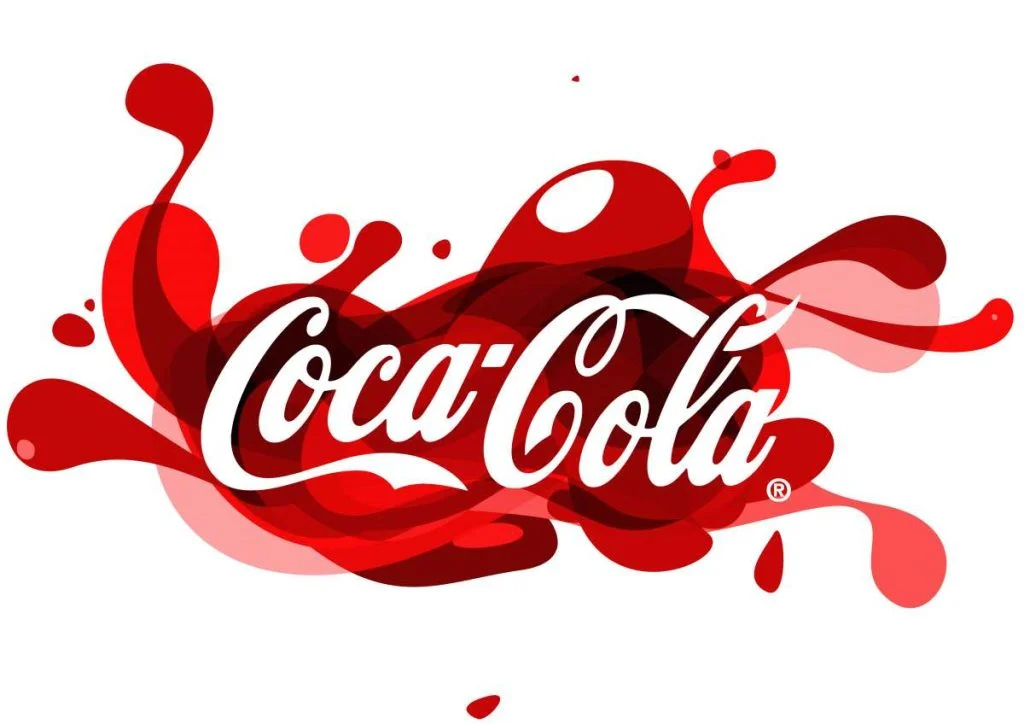
In a world brimming with countless beverages, one name stands tall – Coca-Cola. Also it is among the remarkable case study of success.

Coca-Cola’s Profile:
The year was 1886, and the place was Atlanta, Georgia, where the Coca-Cola saga begins with Dr. John S. Pemberton , a pharmacist. In his laboratory, he mixed together a curious blend of coca leaf extract and kola nut, creating a syrupy concoction that he believed had medicinal properties. This brew, initially intended as a patent medicine to soothe headaches and fatigue. But, later on it was mixed with carbonated water to create a fizzy drink. It was first sold at Jacob’s Pharmacy on May 8, 1886.
It was Frank M. Robinson , Dr. Pemberton’s bookkeeper, who gave the concoction its iconic name. He played a pivotal role in the brand’s early history by suggesting the name Coca-Cola and designing the now-famous logo.
- He believed that “Coca-Cola” conveyed a sense of euphony and captured the drink’s two main ingredients.
- He even penned the flowing script of the Coca-Cola logo that remains an indelible part of the brand’s identity.
Coca-Cola Case Study to Rise to Prominence:
Despite Pemberton’s vision, financial difficulties led to the sale of Coca-Cola formula in 1887 for a mere $2,300.
Its key points:
- Asa Griggs Candler, a visionary businessman, acquired the rights to Coca-Cola and embarked on a mission to make it a national sensation.
- His aggressive marketing tactics and bold advertising campaigns set the stage for Coca-Cola’s expansion.
- In 1894, Candler incorporated The Coca-Cola Company and pushed it for widespread distribution.
- Soon, the beverage was available in every U.S state, solidifying its position as an American favorite.
- Its sales increased by a phenomenal percentage because of Candler efforts.
- The evolution of Coca-Cola would not be complete without mentioning the groundbreaking contour bottle, introduced in 1915.
- It is said to be the stroke of genius – the contour bottle.
- Designed to be distinctively recognizable even in the dark or shattered into pieces.
- This bottle not only protected the secret formula but also became a symbol of Coca-Cola’s commitment to quality.
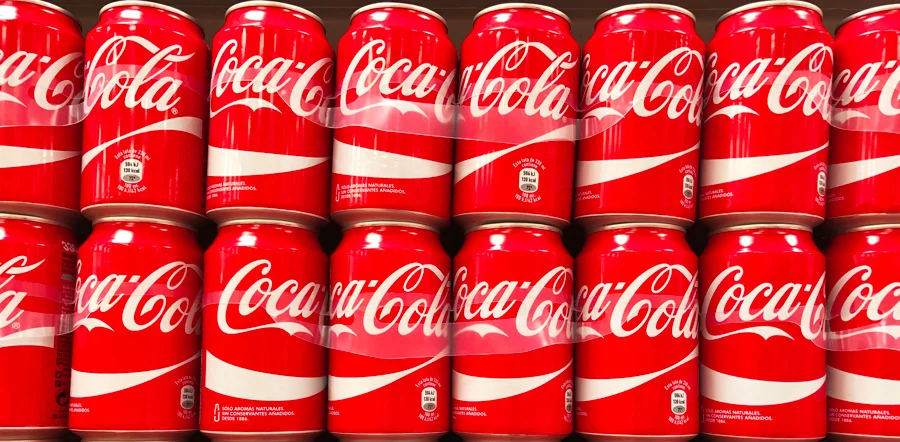
- This curvaceous bottle not only protected the secret formula of the brand itself.
- This distinctive packaging contributed to Coca-Cola’s worldwide recognition.
NOTE: We have detailed article about various functions of packaging ! Do check that out!!
In 1919, Ernest Woodruff bought up the company. Thereafter, Ernest’s sons continued to run the company until they transformed it into an international brand. The company was officially listed on the New York stock exchange in 1919 under the symbol KO.
Coca-Cola’s study to International Expansion:
- With success at home, Coca-Cola set its sights on global domination. During World War II, the company provided American troops with Coca-Cola, using slogans like “The pause that refreshes” to boost morale.
- After the war, international expansion continued, with bottling plants established worldwide.
- The introduction of Coca-Cola during the war created its demand in the international market.
- After that, Coca-Cola began establishing its partnerships with distributors and bottling companies all around the world.
- At present, the company operates and works in more than 200 countries and territories.
- Coca-Cola was launched in India in 1956, with the slogan “Refresh Yourself”.
Some key points of Coca-Cola Case Study:
- The company brand value was estimated at $97.9 billion in 2022.
- The brand logo can be recognized by 93% of the global population.
- For advertisement the company has used $ 4 billion annually for advertising, between the years 2015 to 2021, except for the year 2020 (due to pandemic).
- The company is recorded to have 225 bottling partners and 900 bottling plants globally.
- The brand employs around 700,000 employees.
- The company is recorded to have the same price between the years 1856-1959, at 5 cents.
- Offers beverage options of beverage to more than 200 brands to consumers worldwide.
- Partners with 24 million retail customer outlets.
- Company has a profile that includes $ 21 million brands.
- In 2022, Coca-Cola was the most valuable brand in the non-alcoholic area globally at $ 35.4 billion

Who Owns Coca-Cola?
There are various shareholders holding shares in the company. Coco-Cola is a public listed company.
But the topmost are – Berkshire Hathaway, The Vanguard Group, BlackRock. However, the largest share of the brand company is said to be of Warren Buffett.
- Vanguard holding 8.16%
- Berkshire holding 9.25%
- BlackRock holding 4.58%
- Warren Buffett holding 9.30%
NOTE: You can our other success stories of business like Ola Case Study !
Coca-Cola’s Growth Strategy:
In the competitive landscape of the global beverage industry, Coca-Cola has managed to maintain its position as a market leader for over a century.
Growth Strategy of Coca-Cola:
- Product Diversification: One of Coca-Cola’s core strategies for growth is product diversification. While Coca-Cola classic remains the top product, the company has expanded its portfolio to cater to changing consumer preferences. This includes offerings like Diet Coke, Coca-Cola Zero Sugar, and an array of flavored and non-carbonated beverages such as water, juices, and teas.
- Developed market focus: Coca-Cola has identified the importance of growing developing markets. Coco-Cola’s 70% of all beverages which are commercialized are being consumed in the developed world as compared to the developing world which is 30%.
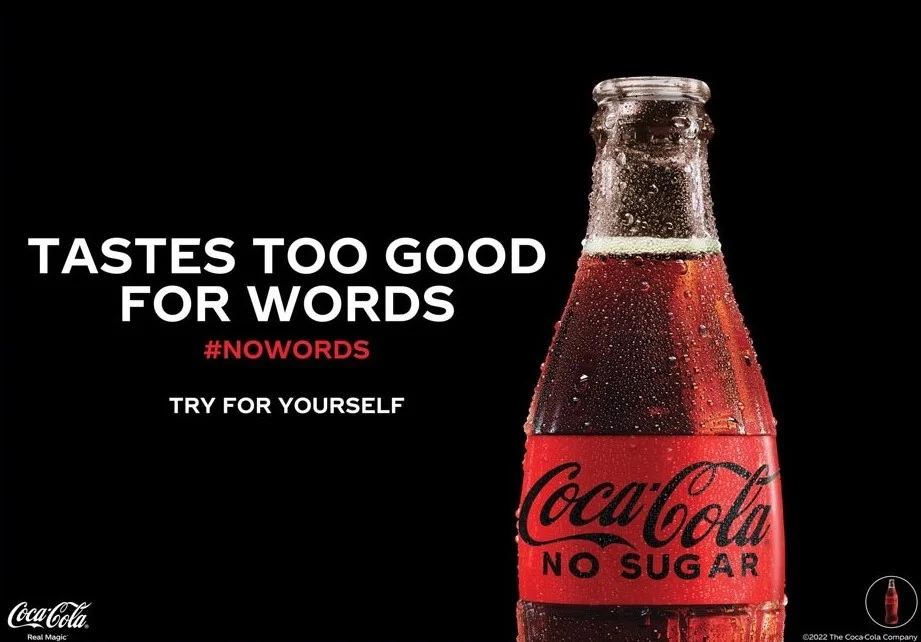
- Global Expansion: With operations in over 200 countries, the company has successfully expanded its footprint worldwide. It supplies its product to local tastes and preferences, ensuring relevance in diverse markets. Local partnerships and distribution networks are key components of this strategy, allowing Coca-Cola to penetrate even the most remote corners of the globe.
- Innovation and New markets: The company continually invests in research and development to create new beverages and packaging solutions. An example of this is the introduction of smaller-sized cans and bottles to address consumer health concerns about portion control and health.
- Branding and Marketing: The company consistently runs high-impact advertising campaigns, often featuring celebrities and memorable slogans. Its marketing goes beyond mere product promotion, it aims to create emotional connections with consumers. For example, Share Coke Campaign.
- Sustainability and Corporate responsibility: The company realized the importance of environmental and social responsibility. Started taking Initiatives such as reducing water usage, recycling programs, and commitments. Which contributes to their sustainable sourcing of ingredients to its long-term growth plans.
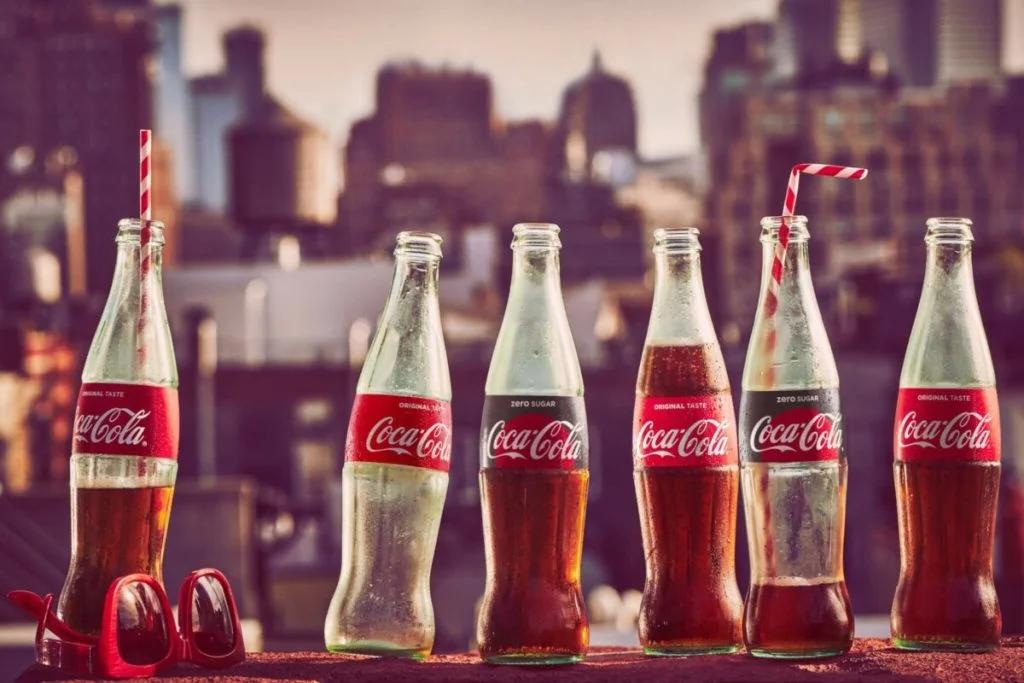
7. Strategic Partnerships: Coca-Cola strategically partners with various organizations and events to enhance its visibility and association with positive experiences. Sponsorships of major sports leagues, music festivals, and cultural events create opportunities for brand exposure and engagement with consumers.
Some memorable marketing campaigns of Coca-Cola that led to its success:
Some of them are:
- Share a Coke (2011) : It was a stroke of genius. Personalization of packaging was a popular marketing tactic of Coca Cola. It personalized its bottles and cans by printing the common names of individuals. The company encouraged people to find their names on the bottles. Also, it asked people to share the bottle or can of coke with their friends or family members.
- Taste the Feeling (2016) : It featured simple, relatable moments of people enjoying Coca-Cola and emphasized that the drink was for everyone, for every feeling, and for every day. The campaign included coke, diet coke and zero sugar coke.
- Thanda matlab Coca-Cola (2003): Aiming at the idea of refreshing drinks or Thanda, the campaign focuses its attention to local markets to win the people’s trust in the country. They made Coca-Cola and Thanda synonyms of each other.
- Open Happiness: In 2009, Coca-Cola introduced the “Open Happiness” campaign, this optimistic and cheerful message encouraged people to find happiness in the little moments and share them with others. The campaign included a variety of feel-good ads, catchy jingles, and interactive marketing initiatives, inviting consumers to be part of the happiness movement.
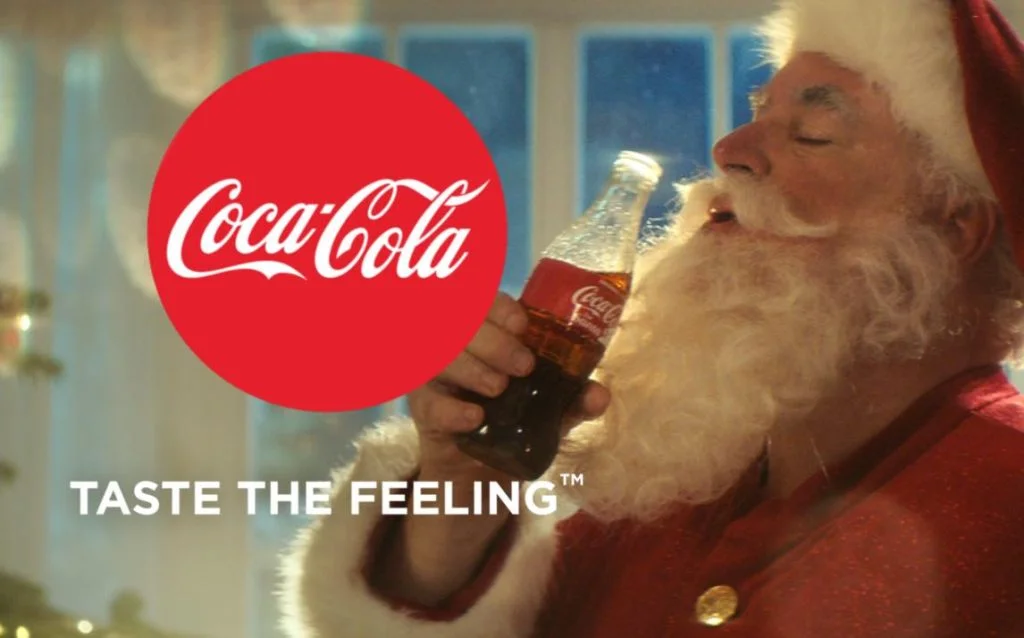
Case Study of Coca-Cola : How Coca-Cola makes money?
Coca-Cola, the world’s most iconic beverage, has a recipe for success that extends far beyond its secret formula. Its ability to generate substantial revenue is a testament to its diverse income streams and strategic business model.
Some of them are :
Core product sales: At its heart, Coca-Cola generates a significant portion of its revenue from the sales of its core products, including Coca-Cola zero sugar, and various flavored variants.
Diversified beverage portfolio: Coca-Cola isn’t just about cola anymore. The company has diversified its product portfolio to include a wide range of beverages, catering to diverse consumer tastes.
Non-Alcoholic ready-to-drink coffee: Coca-Cola has also ventured into the thriving market of non-alcoholic ready-to-drink coffee. With acquisitions like Costa Coffee and brands like Georgia Coffee, it has tapped into the caffeine cravings of consumers worldwide.
Partnerships and Licensing: Coca-Cola earns revenue through partnerships and licensing agreements. For example, it collaborates with other companies to produce co-branded products, like Coca-Cola with coffee, and it licenses its brand for use in various merchandise, from apparel to collectibles
Sponsorships and Marketing Campaigns: Coca-Cola invests heavily in sponsorships of major events, sports leagues, and cultural activities. These partnerships provide brand exposure and promotional opportunities, driving consumer engagement and sales. The company’s marketing campaigns, often featuring celebrities and memorable commercials, also contributes to its revenue.
Conclusion :
This case study of Coca-Cola is a story of its power of innovation, branding, and adaptability. By staying true to its core values while embracing change, Coca-Cola continues to fizz its way to the top.
Related Posts:
Contact Info: Axponent Media Pvt Ltd, 706-707 , 7th Floor Tower A , Iris Tech Park, Sector 48, Sohna Road, Gurugram, India, Pin - 122018
© The Business Rule 2024
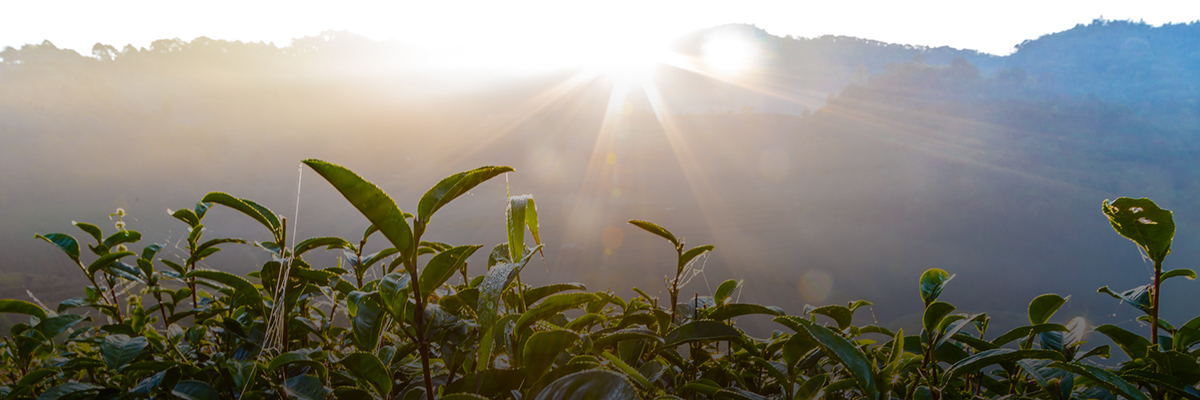
Case Studies
The coca-cola company: building a climate-resilient value chain, july 9, 2018.
The Coca-Cola Company has been working to reduce emissions in its supply chain for years—including not only those associated with bottling, but also those associated with growing ingredients, producing packaging, and distributing and refrigerating products. As climate change impacts have begun to manifest around the globe, the 132-year-old company partnered with BSR to take this work a step further to examine what climate risk and resilience might mean for The Coca-Cola Company value chain.
The Challenge
From agricultural ingredients, like citrus and tea, to hyper-local distribution systems, The Coca-Cola Company supply chain is one of the largest and most complex in the world. Coca-Cola products are sold in more than 200 countries and territories, and each of those markets faces unique exposure and vulnerability to the impacts of climate change.
Mitigation efforts—those focused on reducing greenhouse gas emissions—are vital to any company’s climate strategy and critical to global efforts to avoid unmanageable climate impacts. As the impacts of climate change are increasingly felt around the world, however, it has become clear that simultaneous efforts are necessary to increase adaptive capacity and build resilience.
“Resilience” is defined as “the capacity to recover quickly from difficulties.” In the context of climate change, resilience is the ability of a system (such as a bottling plant, distribution network, or supply chain) or community to rebound following a shock such as a natural disaster. Building resilience requires not only recognizing potential hazards like extreme weather events, but also understanding the underlying vulnerabilities that may affect recovery from these potential disasters. For example, insufficient infrastructure can reduce a community’s capacity to rebound following a disruption like an extreme weather event, as can poverty or gender inequality.
After years focused on climate mitigation and water stewardship, understanding climate risk and resilience was a natural next step for Coca-Cola.
Our Strategy
BSR partnered with Coca-Cola to begin building the foundation for a more resilient company that is better able to anticipate, avoid, accommodate, and recover from climate risks in the future. At the outset, we identified seven markets—Argentina, Brazil, China, India, Kenya, Mexico, and the United States—and two commodities—coffee and tea—to serve as proxies for the full Coca-Cola value chain. For each of these markets and commodities, we explored exposure to major climate hazards in the context of underlying vulnerabilities, such as rapid urbanization, at-risk populations, food and economic insecurity, and insufficient infrastructure.
Using this analysis, a benchmark of climate resilience activities in the food and beverage sector, Coca-Cola’s existing risk mitigation strategy, and insights from internal company interviews, we developed a framework for identifying and prioritizing climate-related risks. We then mapped Coca-Cola’s existing programs and initiatives to high-priority risks and outlined an approach for expanding this work further across the company’s major business units.
Our Outcomes and Impact
The climate resilience framework we developed aims to integrate resilience into Coca-Cola’s existing strategy, risk management, and sustainability systems. The framework is designed to connect and amplify The Coca-Cola Company’s efforts in empowering women, protecting the climate, and sustainably sourcing ingredients, as well as in water leadership and community development. Over time, we hope to see the framework used to help Coca-Cola create a more resilient value chain, enabling the company to confidently source responsibly cultivated ingredients, withstand or promptly recover from climate-related impacts, identify and reduce climate risks, and contribute to building value chain and community resilience where Coca-Cola is produced and sold.
We hope that these leading-edge efforts will inspire other companies, as well as their partners in the public sector and civil society, to take a more holistic look at climate risk in their value chains and communities and identify opportunities to build adaptive capacity and resilience.
Lessons Learned
Undertaking this work with Coca-Cola allowed us to translate what we know about climate risk and resilience into the context of a global supply chain. Here are a few suggestions for companies interested in exploring climate risk and resilience in their value chains:
- Start small : Begin with a selection of facilities, locations, or products that represent important aspects of your business. This will allow you to identify the most useful and important data points before scaling your approach across the organization.
- Integrate into existing systems : Rather than approaching climate risk and resilience as a new, standalone exercise, consider integrating climate considerations into existing risk management and/or sustainability systems.
- Appreciate both the global and the local : Much like water stewardship, managing climate risk and building resilience is both a global and intensely local challenge. While some tenets and approaches can be broadly applied, individual interventions must be customized and reflect on-the-ground realities.
Learn more about our work on climate-resilient supply chains .

Member Company
The Coca-Cola Company
- Climate Change
- Consumer Products
- Food, Beverage, and Agriculture
- Supply Chain
Let’s talk about how BSR can help you to transform your business and achieve your sustainability goals .
You Might Also Like

What the SBTi Battle Portends: The Decisive Decade Becomes the Dilemma Decade
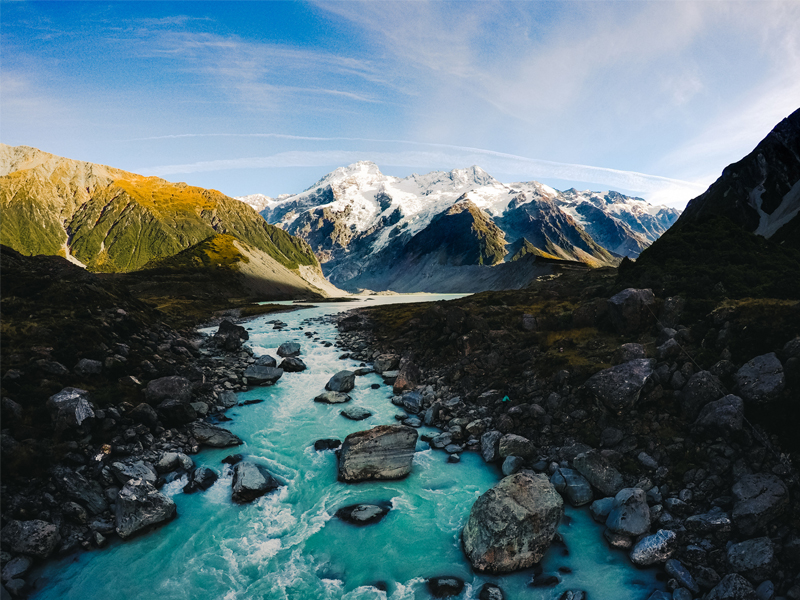
1.5°C Targets: The Business Case for a Climate Transition Plan

RISE: A Reflection on Women’s Advancement Beyond Supervisory Roles in the Garment Industry
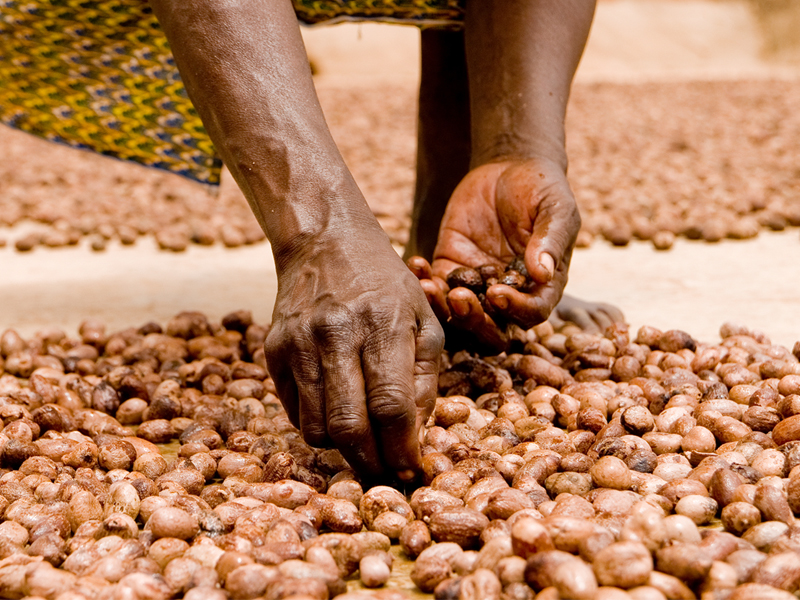
Investing in Women Workers: How Training has Helped Build Financial Resilience in Shea Supply Chains

Developing a Climate Justice Framework
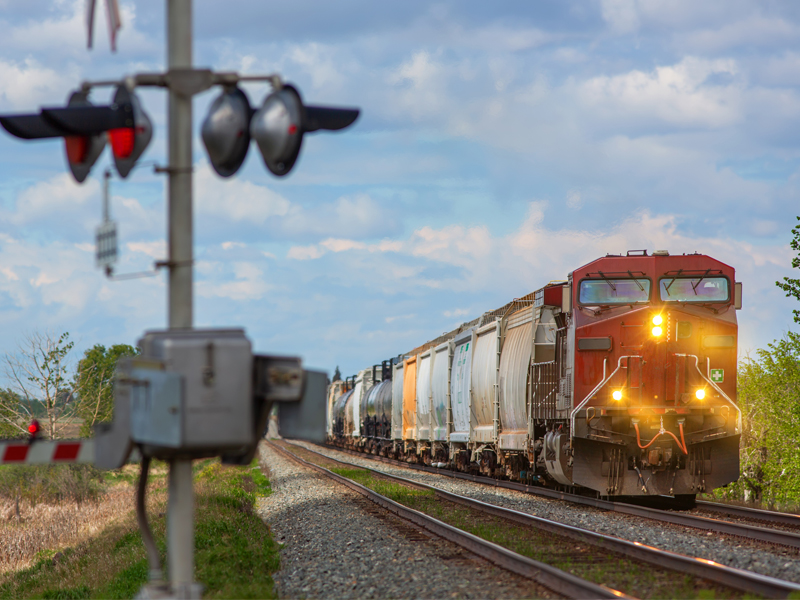
Driving Forward Human Rights in Transport & Logistics
Back to Case Studies
REVENUE DRIVEN FOR OUR CLIENTS
- Client Login
- 888-601-5359
Showing 1 - 10 out of 832 for:
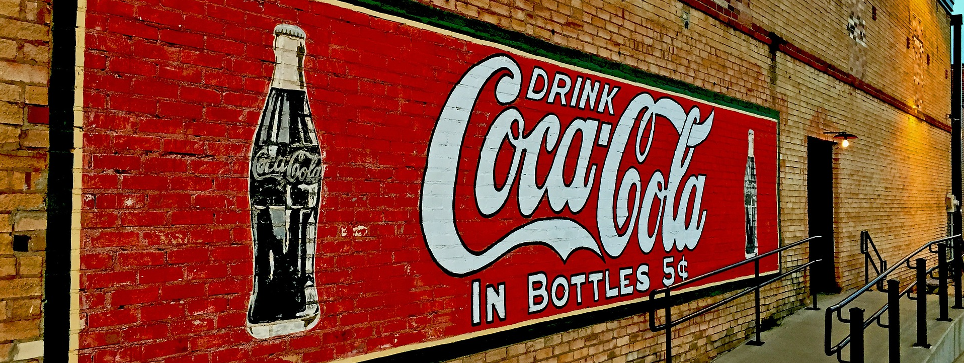
- Marketing Case Study: 3 Famous Coca-Cola Marketing Campaigns
Case Study: 3 Famous Coca-Cola Marketing Campaigns
- The WebFX team is made up of more than 500 subject matter experts in digital marketing, SEO, web design and web development, social media, and more. Together, they’ve helped WebFX’s clients earn more than $6 billion in revenue from the web — and that’s just in the past five years. @webfx
If you’re going to spotlight a historic company with tons of great marketing to learn from, who better than Coca-Cola? This classic brand has been reminding us to “Drink Coca-Cola” since 1886 and now encourages millions around the world to “Open Happiness” every day. One thing that has remained constant throughout the history of Coke is the innovative marketing campaigns that have launched and re-launched the brand and its product to the world.
Coca-Cola advertising history is filled with famous marketing campaigns that rank among some of the most effective in the world. Here are just a few of my favorite Coca-Cola campaigns that both capture the essence of Coke’s brand and provide great content marketing strategies for the rest of us to emulate.
1. The “Share A Coke” Campaign
Last June, Coke launched its “Share A Coke” campaign in the U.S., using 250 of the most common U.S. millennial names to market its product to individual consumers. The campaign seems to have been a huge success with U.S.
audiences, gaining significant traction in the short amount of time the ad has been running here. According to the Wall Street Journal , more than 125,000 social media posts referenced the “Share A Coke” campaign between June and July of 2014, and 12% of online conversations about Coca-Cola in that time can be attributed to the campaign. What’s more, over 353,000 virtual bottles of coke have been shared via Coke’s campaign-specific website.
We can also see the success of this campaign when we look at data for the Coca-Cola brand in Google Trends. After being launched in the U.S., the campaign earned an increasing amount of attention. The search term “share a coke” saw a significant increase in U.S.-based Google searches in the short, three-month time lapse from June to August.
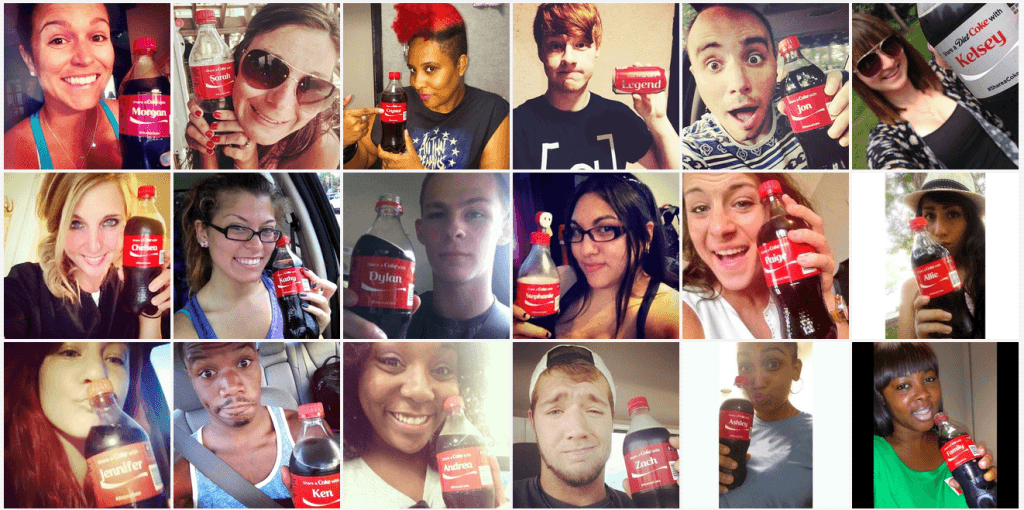
Sharing around the world
Of course, the “Share A Coke” campaign was not launched exclusively in the U.S. The campaign, one of the most famous ad campaigns in recent history, began in late 2011 in Australia and New Zealand, the success of which convinced the brand that the ad was worth replicating in other parts of the world. During the trial period in Australia, there was a 7% increase in consumption of Coca-Cola products by Australian young adults, and the ad campaign earned well over 18 million impressions via social media .
In terms of Facebook specifically, Coke’s page earned 39% more followers and visitors to the page shot up by 870%. The “Share A Coke” campaign was expanded across 20 global markets, including those in the U.K., China, and Brazil.
What we can learn from this campaign:
One of the reasons this campaign was so successful is because it directly appeals to individual consumers. What better way to grab someone’s attention than by putting his or her name directly on your product?
Of course, this isn’t a realistic strategy – or even a good strategy – for many companies, but it’s important that you always consider how your campaign will be perceived at the individual level. Another aspect of this ad that makes it so memorable and effective is its ability to adapt to narrative structures. That is to say, this campaign offers endless possibilities for storytelling in its advertising.
And since ads that tell some kind of story are likely to be more effective, that’s a big plus for Coca-Cola. When designing your next ad campaign, think about the storytelling potential of the campaign early on.
2. The “Always Coca-Cola” Campaign
This is probably one of the most well-known marketing campaigns of all time. Responsible for the permanent branding of polar bears into Coke’s company image, the “Always Coca-Cola” campaign began in 1993 when the company decided to experiment with a recent technological development: computer animation. Of the 27 commercials created for the “Always Coca-Cola” campaign, one in particular stood out: the “Northern Lights” commercial, which would go on to immortalize the heartwarming connection between Coca-Cola and polar bears.
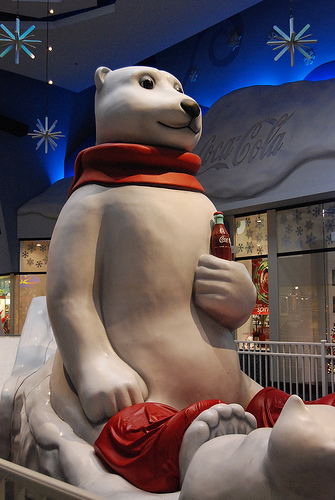
Would the “Northern Lights” commercial have made as big of an impact if Coke had avoided the hassles of using computer-animated images in favor of hand-drawn animation? I can’t say. But I do think that the company’s decision to go with a new technology helped its campaign to reach new heights and make a more definitive impact on the people who saw it.
Keep your eyes open for new opportunities to market your brand , even if it involves trying something much different from the norm.
3. “The World’s Cup” Campaign
As an official sponsor of the 2014 FIFA World Cup in Brazil, Coca-Cola had a prime opportunity to market itself to the hundreds of millions of soccer and football fans who would follow the lead-up to the event. “The World’s Cup” campaign was created to celebrate the unifying good that can come of many people’s love for a single sport. Coke did an excellent job of tapping into a realistic and captivating story with this campaign, especially when compared to Pepsi’s ad for the 2014 World Cup .
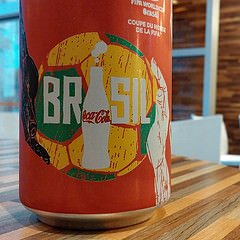
Don’t just tell a story, be a story.
If you want to create an inspirational ad campaign that truly moves people, you need to also find a way to make that story happen in real life . Get involved with your community or find ways to show how your clients give back to theirs. Certainly, not all of us have the reach or budget that Coke is working with, but by learning from some really amazing marketing campaigns they’ve created, we can learn how to be even better marketers and advertisers than we are now. In fact, even Coke realizes the value of learning from others and being open to new ideas.
On March 23, 2015, the brand asked 10 different agencies from around the world to pitch ideas for its next global campaign. Despite the fact that their current campaign, “Open Happiness,” is still doing well, they are always looking to improve and drive growth. This is undoubtedly a contributing factor to the company’s many advertising successes, and is a great goal for any business.
Although most companies do not have the budget or the reach to get ideas from 10 different agencies, most have the ability to ask at least 10 different employees. If your marketing efforts are usually confined to one department, consider getting some fresh perspectives on your company’s image and strategy. Not all of your employees will have the skills to fully develop and launch a campaign, but they certainly know what your company is like and what its values are.
This could be as simple as asking one or two people for suggestions, or as complex as a company-wide contest for who can come up with the best new campaign idea. Either way, as these famous advertising campaigns have shown us, it can’t hurt to get those who know your brand best involved in informing others about it. If there are any remarkable Coke campaigns I’ve left out, or ones you’ve personally taken advertising lessons from, feel free to let me know in the comments!
Photo credit: Nik Voon , hyku, jfingas , ShareACoke.com
WebFX is a full-service marketing agency with 1,100+ client reviews and a 4.9-star rating on Clutch! Find out how our expert team and revenue-accelerating tech can drive results for you! Learn more
Try our free Marketing Calculator
Craft a tailored online marketing strategy! Utilize our free Internet marketing calculator for a custom plan based on your location, reach, timeframe, and budget.

Table of Contents
- 1. the “Share a Coke” Campaign
- 2. the “Always Coca-Cola” Campaign
- 3. “The World’s Cup” Campaign
Share this article
Maximize Your Marketing ROI
Claim your free eBook packed with proven strategies to boost your marketing efforts.
What to read next
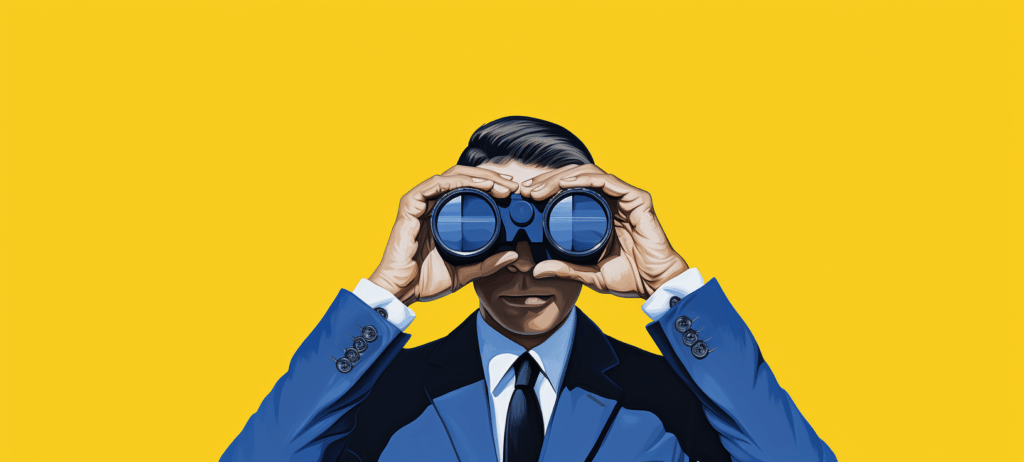
Related Resources
Marketing tips for niche industries.
Coca Cola Marketing Strategy - A Case Study

- Published on 14 Sep 2023

Table of Contents
Coca cola's killer marketing strategy - a case study 2024, what is coca-cola, from pharmacist's elixir to global refreshment drink, what is coca cola marketing strategy, what makes coca cola marketing strategy so successful.
Coca-Cola, one of the globally well-known soft drink producing brands, is still leading on top #1 competing with all other soft-drink producing brands in the market. The brand marketing strategy of Coca-Cola is exceptionally unique.
Coca-Cola first set up its roots in 1886 and is still somehow capable of competing with every other soft-drink brand in the market. Starting with nine servings a day, Coca-Cola now produces about 1.9 billion servings each day.
Coca-Cola's marketing strategies are so precisely designed that they have a strong brand base as well as global recognition. A well-designed strategy can help any company run down the right track towards the company’s success.
The precise Marketing plan of Coca Cola’s growth is still a mystery. In this article, we will try to break down the Coca Cola marketing strategy that we have studied.

Coca-Cola is a type of carbonated soft drink that is being produced by the Coca-Cola Company. It was initially intended to serve as a patient's medicine drink. As a medicine, the Coca-Cola recipe was a known remedy, but now the formula for the soft drink remains a trade secret.
Taking the name of the drink as a reference, this soft drink refers to a drink containing a blend of coca leaves and kola nuts, which basically is a source of caffeine.
To compete with the leading companies, as always, there would always be competitors who would come up with alternatives. Although there are so many competitors out there, none of them have ever won against the Coca Cola’s marketing strategy.
On May 8, 1886, Dr. John Pemberton sold the first glass of Coca-Cola. Initially, Coca-Cola was being sold at a pharmacy in downtown Atlanta. It was first intended to be served as a patient's medicine. This medicine drink slowly turned into a refreshment drink, and now it is served as an alternative to fresh juice.
Due to its wide availability across the globe, spanning across 200+ countries, the company now serves about 1.9 billion servings daily.
Success for a company can only be achieved by designing a properly planned marketing campaign. Marketing is the key to the success of any company or project. Marketing strategies can be done in multiple formats. It all depends on what type of product is being produced by the company.
The worldwide success of Coca-Cola can only be possible with a properly planned marketing strategy. Coca-Cola marketing strategies were mostly first experimented with before planning. Coca cola advertising strategy is one of the examples. Coca-Cola's marketing strategy ensures that the customer’s needs are met. For every step they take, they make sure that their customer volume will not decrease.
These are some of Coca-Cola’s advertising strategy and marketing strategies that inspired their competitors and other companies.

Global advertising:
Creative advertising was always one of the key concepts of the Coca Cola marketing strategy . Every time Coca-Cola works on advertising their brand, they do it worldwide. Together with this, they also respect their customers from every country they serve. Hence, they made themselves sure to provide their customers with what they wanted.
Making the product available everywhere helped them cover all corners of the world.
Labeling done in regional languages helped in developing emotional branding.
Partnering with regional outlets and celebrities served more customers.
Creative advertising entertained and attracted more customers.
A brand of any kind is first identified and recognized by its logo. It is very important to know what you give to your customers. The logo, color, caption, all of these are part of the branding. Coca-Cola understood this very well and did the same.
By maintaining the same brand logo, they made their customers understand that they were holding a branded item in their hands. The labeling pattern became a trademark for the Coca-Cola brand, and everyone can tell which one is a Coca-Cola simply by looking at it.

Portfolio Marketing:
Branding also depends on the portfolio of the company. The Coca Cola marketing strategy made sure that the company's portfolio was nicely maintained within their niche.
The Coca-Cola brand grew by introducing multiple new products into the market. They managed to keep their portfolio limited to beverages like juices, teas, coffees, and soft drinks. This also helped them reach more customers with different preferences and tastes for soft drinks.
They began to buy companies producing native products to first expand their portfolio for native customers. They gradually conveyed that they also had other products from their production, and customers responded to them by buying them.
Native companies like Maaza , Fanta , and Sprite depended on Coca Cola marketing strategy to expand their own brand. This helped not only Coca-Cola in expanding their customer base, but also other local soft-drink companies.
Competing with prices:
When you receive global recognition, you start to receive more competitors. This makes it hard to compete with prices. The Coca Cola marketing strategy was precisely designed to not only cut down the MRP but somehow maintain the profits of the products. This helped them maintain their customer volume.
The pricing strategy and the Marketing plan of coca cola not only helped them smartly compete with competitors but also helped gain more customers.
Coca-Cola's marketing strategy suggests that the company change its pricing frequently.
Smart promotion strategies:

Promotions can play a very important role in the marketing of a product. Since the liability for customers is increasing, promotion platforms have now become easily accessible. Hence, for big companies like Coca-Cola, it is now even easier to access all those platforms.
Since Coca-Cola's distribution network is very vast, Coca-Cola's marketing strategy helps in covering almost every medium of promotion, such as,
Posters and banners
Social media
By utilizing all these modes of promotion, a product can reach almost any corner of the world. Hence, giving them the highest reach compared to their competitors.
Sponsorships:
Sponsorships are one of the most widely used methods to attract most customers. Coca-Cola is also one of those well-recognized brands for its sponsorships. Coca-Cola provides world-wide sponsorships for organizations like the Olympics, FIFA, NBA, and also television shows like American Idol.
Such sponsorships actually help companies gain more customers. Fans of such organizations and shows look at celebrities consuming company soft-drinks and will eventually try the same.
Social media:
With the advancements in technology, social media has now become a significant role in Coca-Cola’s marketing strategy. People organizing social media accounts make sure that they keep posting content related to branding and updates about the products.
Social media marketing includes platforms like email marketing, SEO, content marketing, etc. With a proper strategic approach, companies can reach a wide number of audiences on social media platforms.
Personalization:
From Coca Cola marketing strategy, personalization is one of the most unique marketing concepts they have ever come up with.
The personalization of packages helped Coca-Cola gain a good number of customers. By personalizing the packages with customers' names on the bottles, they noticed a rise in sales of products. This gave them an idea of what methods would work with their products.
They also send emails to customers subscribed to their news feeds by addressing them by their first names. This also helped them develop an emotional brand with customers.
Providing personalized tickets to offer a free drink for the next bottle helped them attract more customers.
Coca-Cola is one of those very few companies that provide what their customers crave. They do not take advantage of this and they always try to provide customers with a quality drink. As the brand has quoted, "Open a Coke, Open Happiness."
The Coca-Cola marketing strategy is not just a plan for marketing and promoting their product. It is all a part of a person’s needs. They maintain that connection with their customers and always plan according to the response from the public and media. This helps them design a strategy that helps them never lose their customer volume.

This article is derived to give you a clear idea of how a well-designed marketing strategy for a product can influence the sales and reach of the company and customer. It also emphasizes the importance of a precisely designed Coca Cola marketing plan in achieving these goals.
Marketing strategy of Coca-Cola is said to be one of the most successful strategies of all time. Coke marketing strategy organizes and designs their strategies in accordance with the results of the campaigns and customer opinions. This helps meeting customer needs earning their loyalty.
The research and analysis they perform about the advancements in technology allows them to properly design the Coca-Cola marketing strategy, which helps them in all ways.
Coca Cola marketing strategy suggests the company should maintain a constant flow of sales and happy customers. This allows them to try and experiment with numerous strategies and ideas. This also includes the creative marketing ideas.
In the field of sales management and marketing, digital marketing has become one of the most practiced elements. So to learn and master digital marketing, enroll now in Sprintzeal’s Digital Marketing Master’s Program Certification Training .
Visit the official Sprintzeal website to explore more professional certification courses.

Subscribe to our Newsletters
Explore program.

Apply for Free Consultation

Our technical content writer, Sushmith, is an experienced writer, creating articles and content for websites, specializing in the areas of training programs and educational content. His writings are mainly concerned with the most major developments in specialized certification and training, e-learning, and other significant areas in the field of education.
Popular Programs

Digital Marketing Masters Program
Live virtual training.
- 5 (859 + Ratings)
- 55k + Learners
Trending Now
Top Google Chrome Extensions for Online Marketers in 2024
11 Most Common Misconceptions About SEO in 2024
Guide to Banner Advertising for Google Ad Sense and Other Ad Networks
Brand Managers Guide 2024
Digital Marketing – Benefits, Types, Certifications and Jobs
Red Bull's Extreme Marketing Strategies: Gives You Wings
Latest Digital Marketing Manager Interview Questions and Answers 2024
Top SEO Topics and Concepts – Role of SEO, Google, and AI with SEO
Digital Marketer Interview Questions and Answers 2024
Fundamentals of Digital Marketing 2024
Best Digital Marketing Books for 2024
On Page SEO Guide
Digital Marketing Plan - How to Create and Execute it
Brand Marketing Strategy Guide
YouTube Marketing Guide 2024
Career in Digital Marketing - A Complete Guide
SEO Optimization Tips for 2024
Career in Advertising - The Beginner's Guide
Affiliate Marketing - A Comprehensive Guide for Beginners
CPA Marketing Guide 2024
Search Engine Marketing - A Guide for Beginners
Top Digital Marketing Tools 2024
The future of Digital Marketing
Conversational Marketing - The Ultimate Guide 2024
Tesla Marketing Strategy: Key Lessons to Learn
Digital Marketing Challenges & Solutions in 2024
SEO in Digital Marketing - How Does It Work?
How to Create a Social Media Marketing Strategy
Email Marketing for Beginners - Tips, Tools and Advantages
Colors for Marketing: Psychology of Colors for Your Brand
LinkedIn B2B Marketing Guide
What is PERT? How to use PERT in Project Management?
A Beginners guide to LinkedIn Marketing in 2024
Traditional Marketing vs Digital Marketing: How to Choose?
Types of Infographics - When and How to Use
Digital Economy - What is it and why is it important
What is Digital Leadership? A Brief Guide
Digital Marketing Tips for 2024
Online branding - Examples & Strategies
Amazon Marketing Strategy – A Brief Guide
Netflix marketing strategy- An overview on marketing tactics of Netflix
IKEA Marketing Strategy - An Inspiring Finding from the Case Studies
Nike Marketing Strategy 2024 - 7 Effective Findings from Case Studies
Discover Starbucks Marketing Strategy: The Success Secret
McDonalds marketing strategy: Inspiring Findings from a Case Study
What is Online Networking? How Can It Benefit Your Career Success?
Microsoft’s Market Success Strategy: A Case Study
Career Opportunities in Digital Marketing - A Complete Guide
Social Media Marketing Fundamentals for Business Growth
Crafting an Effective Social Media Strategy
- Agile Management 59
- AI and Machine Learning 28
- Big Data 52
- Business Management 25
- Cloud Computing 37
- Digital Marketing 51
- IT Hardware and Networking 13
- IT Security 79
- IT Service Management 28
- Microsoft Program 2
- Programming Language 29
- Project Management 124
- Quality Management 57
- Risk Management 2
- Workplace Skill Building 1
Trending Posts

Last updated on 10 Jul 2023

Last updated on 11 Nov 2022

Last updated on 4 Oct 2023

Last updated on 8 Jun 2023

Last updated on 25 Apr 2024

Last updated on 1 Jun 2023

- Corporate Partners
- Affiliate Program
QUICK LINKS
- Terms & Conditions
- Privacy Policy
- Cookie Policy
- Become an Instructor
- Sprintzeal Reviews
SECURE PAYMENTS
Top Trending Courses
People also bought.
© 2024 Sprintzeal Americas Inc. - All Rights Reserved.
- PMP, PMI, PMBOK, CAPM, PgMP, PfMP, ACP, PBA, RMP and SP are registered marks of the Project Management Institute, Inc.
- CBAP® - Is a registered trade mark of IIBA.
- ITIL® is a registered trade mark of AXELOS Limited, used under permission of AXELOS Limited. The Swirl logoTM is a trademark of AXELOS Limited, used under permission of AXELOS Limited. All rights reserved
- PRINCE2® is a registered trade mark of AXELOS Limited, used under permission of AXELOS Limited. The Swirl logoTM is a trademark of AXELOS Limited, used under permission of AXELOS Limited. All rights reserved
- Certified ScrumMaster® (CSM) and Certified Scrum Trainer® (CST) are registered trademarks of SCRUM ALLIANCE®
- Professional Scrum Master is a registered trademark of Scrum.org
- The APMG-International Finance for Non-Financial Managers and Swirl Device logo is a trade mark of The APM Group Limited.
- The Open Group®, TOGAF® are trademarks of The Open Group.
- IIBA®, the IIBA® logo, BABOK® and Business Analysis Body of Knowledge® are registered trademarks owned by International Institute of Business Analysis.
- CBAP® is a registered certification mark owned by International Institute of Business Analysis. Certified Business Analysis Professional, EEP and the EEP logo are trademarks owned by International Institute of Business Analysis..
- COBIT® is a trademark of ISACA® registered in the United States and other countries.
- CISA® is a Registered Trade Mark of the Information Systems Audit and Control Association (ISACA) and the IT Governance Institute.
- CISSP® is a registered mark of The International Information Systems Security Certification Consortium ((ISC)2).
- CompTIA A+, CompTIA Network+, CompTIA Security+ are registered marks of CompTIA Inc
- CISCO®, CCNA®, and CCNP® are trademarks of Cisco and registered trademarks in the United States and certain other countries.
- CSM®, CSPO®, CSD®, CSP®, A-CSPO®, A-CSM® are registered trademarks of Scrum Alliance®
- TOGAF® is a registered trademark of The Open Group in the United States and other countries
- All the online courses are accredited by respective governing bodies and belong to their respective owners.
- Call us on +1 833 636 6366
- Request a callback
- Mail Your Queries
Enquire Now for Up to 30% Off!
WHO WILL BE FUNDING THE COURSE?
A Case Study on Coca-Cola Marketing Strategy [2024]
![case study of coca cola A Case Study on Coca-Cola Marketing Strategy [2024]](https://www.upgrad.com/__khugblog-next/image/?url=https%3A%2F%2Fd14b9ctw0m6fid.cloudfront.net%2Fugblog%2Fwp-content%2Fuploads%2F2019%2F07%2FBlog_FI_July_upGrads-Knowledge-base.png&w=1920&q=75)
What is the first thought that comes to your mind when you think about the fizz of a red and white can opening on a hot summer day? Can you feel the bubbling taste of Coca-Cola in your mouth at this imagery? Undoubtedly, that would be a yes! No one asks for a soft beverage anymore. Asking for soft drinks has ubiquitously become asking for Coca-Cola in over 200 countries and territories . Moreover, the Coca-Cola logo is recognised by a staggering 94% of the world’s population !
Learn digital marketing courses online from the World’s top Universities. Earn Masters, Executive PGP, or Advanced Certificate Programs to fast-track your career.
So, how did Coca-Cola achieve this eponymous status? Let’s turn to the history of the brand and learn about the winning Coca Cola marketing strategy .
Looking back: A History of Coca-Cola
Rome was not built in a day, nor was Coca-Cola’s reputation as a market leader. On 8th May 1886, pharmacist Dr. John S. Pemberton perfected the formula for a “ Delicious and Refreshing ” carbonated water in Atlanta, Georgia. It sold from the counter of Jacob’s Pharmacy for five cents a glass and clocked in an average sale of nine drinks per day in its first year. Pemberton’s partner and bookkeeper, Frank M. Robinson, designed the brand name and logo for the fountain soda. It is the first instance revealing the cleverly crafted Coca Cola advertising strategy .

The (over) 130-year-old company retains its characteristic swirly, elaborate script announcing the brand name “Coca-Cola” to the world. Robinson believed that “ the two Cs would look well in advertising .” The Spencerian script received its trademark from the U.S. Patent Office on 31st January 1893. Since then, the logo has witnessed several minor and major changes , yet it remains the most recognisable logo in the world. The duo placed their first newspaper ad promoting the soda fountain drink in the Atlanta Journal . The logo became visible on store awnings signalling to potential consumers about the newly available soda fountain featuring the word “Drink.”
Before his death in 1888, Pemberton sold a large part of the business to an Atlanta businessman, Asa G. Candler. By 1900, the beverage was being sold across all U.S. states. Between 1890-1900, its sale increased by a phenomenal 4000% because of Candler’s marketing efforts. Its growing popularity meant its sales as simply a fountain soda would not suffice. It went on to be bottled with the distinctive logo and its Spencerian script embossed on each bottle. However, infringement from competitors confused consumers. So, Coca-Cola devised a strategy- the iconic contour-shaped bottle synonymous with the brand!

Image Source: Evolution of the bottle
As is evident, the Coca Cola marketing strategy has been part of the brand’s modus operandi since its inception. From its logo to its unique bottle shape, distributing coupons and storefront banners to price control- the Coca-Cola marketing mix was already at play. The company has grown in leaps and bounds from nine drinks per day in 1886 to the 1.9 billion servings sold daily today . The Coca Cola marketing strategy is a master class in building a brand with the most recognisable logo in the world!
The Supremacy of Coca-Cola
Coca-Cola has reigned supreme for over a century now. Its reach and popularity are incomparable. Let’s look at some statistics and figures that prove the brand is at the top of its game and the Coca Cola marketing strategy has been central to its developmental plan.
- The Coca-Cola logo can be recognised by 94% of the global population .
- In 2022, Coca-Cola’s brand value was estimated at USD 97.9 billion .
- The company spent USD 4 billion annually between 2015 and 2021 (except 2020) to advertise its drinks to a global audience.
- Coca-Cola offers beverage options through its 200+ brands to consumers worldwide.
- The Coca-Cola Company employs over 700,000 employees .
- The company has about 225 bottling partners and 900 bottling plants globally.
- Between 1886 and 1959 (about 70 years), the price of Coca-Cola remained unchanged at 5 cents .
- The company partners with 24 million retail customer outlets.
- The company’s portfolio includes 21 billion-dollar brands .
- Coca-Cola is the most valuable brand in the non-alcoholic drinks sector globally at USD 35.4 billion in 2022.
Key Marketing Campaigns of Coca-Cola
Coca-Cola has run some of the most successful global and national marketing campaigns. Its success can largely be attributed to the unbeatable Coca Cola advertising strategy . Witty taglines, catchy tunes, emotional content, and remarkable collaborations and sponsorships make the brand’s campaign portfolio mighty impressive.
Here are some of the most noteworthy marketing campaigns of Coca-Cola.
Always Coca-Cola
To appeal to a younger and global audience, Coca-Cola came up with 27 different advertisements that would appeal to specific audiences in 1993. The most popular among them was the ‘ Northern Lights ’ ad featuring polar bears, which have become the mascot for the brand today. The company forayed into using computer animation for the first time in television advertising history. Since then, the polar bears have reappeared in the famous Super Bowl ad of 2012, where the viewers could watch them reacting to the games online in real-time.
Share a Coke
The campaign launched in 2011 in Australia. Through the campaign, people could personalise their Coke bottles with their names. In some countries, the ubiquitous logo was replaced with the most famous names in the country. The company capitalised on its brand image of cultivating friendships and connecting people through sharing. The campaign’s popularity resulted in it spreading to over 70 countries and increasing sales by 7% .

Image source: Share a Coke campaign in India
Open Happiness
Part of an integrated global marketing campaign, the Open Happiness campaign rolled out in the first half of 2009. The campaign sought to share the message of enjoying and sharing the small joys of everyday life and the simple pleasures of life. Its many guerilla marketing initiatives, such as the Happiness Truck and Happiness Vending Machine, engaged with people directly. In India, the campaign took a local flavour and incorporated India’s love affair with cricket to promote its message through its “Cricket ki Khushi” campaign.
Taste the Feeling
With its global initiative, the company rolled out the campaign in over 200 countries in 2016. The theme was simple- it promoted the emotions and feelings associated with drinking Coca-Cola and its everyday moments that unite a diversity of people. The campaign united Coke, Coke Zero, and Diet Coke under ‘One Brand.’ The company wanted to remind people that drinking Coca-Cola was a feeling.
Thanda Matlab Coca Cola
In 2003, the company launched a national campaign in India to make Coca-Cola the beverage of choice for Indians. Capitalising on the idea of a refreshing cool drink or ‘Thanda,’ the campaign drew on this local association to win the hearts of the masses in the country. So, Coca-Cola became synonymous with Thanda. It was followed by the “Sabka Thanda Ek” campaign highlighting the emotional appeal of Coca-Cola as the universal choice.
The Marketing Genius of Coca-Cola
Looking back at the phenomenal response to Coca-Cola’s marketing campaigns, you can already see the hallmarks of the legendary Coca Cola marketing strategy . Here is a breakdown of the brand’s marketing strategy.
1. Product strategy
With a portfolio of over 500 products, the brand is a behemoth in the soft beverage sector. With options in different sizes and packaging, the brand has kept up with the needs of the time by catering to the changing market demands and appealing to a wide audience with different tastes. It has been crucial to the success of the Coca Cola marketing mix .
2. Price strategy
The price of its products has remained competitive without significant changes to retain its customer base. The segmentation of its product portfolio to appeal to different consumer categories has been an impactful factor in making the Coca Cola marketing mix work in increasing sales.
3. Place strategy
The company has an expansive network of manufacturers, bottlers, distributors, and retailers to keep its supply chain running smoothly. With operations spread across the globe, the company has captured the world market without hurting its operational costs. Moreover, it has diversified and localised its products by identifying the right markets and their requirements.
4. Promotion strategy
With the Cola Wars coming to a head, the promotional strategy of Coca-Cola kicked into high gear. The company invests heavily in promoting and marketing its brand, spending USD 4 billion annually on branding. Their promotional activity does not simply rely on achieving universal appeal but also targets a specific audience to cater to diverse groups. The brand uses every medium known to promote itself- from billboards and television to social media and live events.
Best Digital Marketing Courses Online
| To Explore all our courses, visit our page below. | |
5. Local appeal
As a global brand with a presence across nations, Coca-Cola speaks to the demands and emotions of the local audience. Its products, pricing, and promotional activities are in tune with the specific context of the market. It relies heavily on local language, celebrity power, culture, and tastes to make inroads and maintain its presence in local markets.
In-demand Digital Marketing Skills
6. Sponsorships
Coca-Cola sponsors some of the biggest global sporting and entertainment events and programs with a massive following. Whether it’s the Olympics, FIFA, NASCAR, American Idol, or Coke Studio, the Coca-Cola logo is front and centre, making it a highly recognisable brand.
7. Social Media
Social media popularity is a new currency that Coca-Cola capitalises on for branding. Online social media marketing campaigns have become a mainstay to keep the audience engaged through storytelling, interactive activities, social causes, and information-sharing. Campaigns like #ThatsGold, Share a Coke, and Polar Bowl leveraged social media to increase engagement.
Digital Marketing Free courses to Learn
8. Emotional appeal
Coca-Cola has mastered the art of appealing to its audience’s emotions. The foundational objective of the Coca Cola advertising strategy is to get the audience to ‘feel’ and connect with the brand and its products. Its campaigns incorporate Coca-Cola into everyday moments, so the audience associates it with happiness, sharing, and togetherness.
The Coca-Cola marketing strategy is an innovative, ever-evolving, multi-pronged strategy that has given the brand its proprietary eponymous status. The potent combination of the Coca Cola marketing mix , the Coca Cola advertising strategy , the iconic Coca-Cola logo, its ability to adapt, and its emotional connection with the masses has catapulted the legendary company’s reputation and sales. Are you intrigued by Coca-Cola’s marketing journey and evolution?
Take a step into the competitive and dynamic world of branding with upGrad

Turn to upGrad’s Advanced Certificate in Brand Communication Management from the premium institute, MICA. The 5-month online (with optional immersion) course will help you develop a comprehensive knowledge of Branding and Communication. Opt for a specialisation of your choice and get placement assistance from upGrad.
Build your brand and become part of an illustrious network by enrolling today !
Popular Digital Marketing Blogs

Robin Joseph Abraham
Something went wrong
Our Popular Digital Marketing Course

Our Trending Digital Marketing Courses
- Advance Certification in Digital Marketing and Communication - Duration 6.5 - 11 Months
- Digital Marketing for Leaders - Duration 3 Months
- Executive Program in Digital Branding and Advertising - Duration 6 Months
Digital Marketing Skills to Master
- Advertising Courses
- Influencer Marketing Courses
- SEO Courses
- Performance Marketing Courses
- SEM Courses
- Email Marketing Courses
- Content Marketing Courses
- Social Media Marketing Courses
- Display Advertising Courses
- Web Analytics Courses
- Affiliate Marketing Courses
Frequently Asked Questions (FAQs)
The marketing mix refers to marketing tools and tactics to promote a brand and enhance sales. It involves focusing on product, place, price, and promotion.
Coca-Cola was first launched in India in 1956 but left in 1977 due to government policies. It re-entered the Indian market in 1992.
The Cola Wars refers to the long-standing rivalry between Coca-Cola and PepsiCo for market dominance, particularly for their flagship products.
Related Programs View All

Certification
View Program

1-1 Mentorship & Job Support
2 Specialisations
1:1 Executive Coaching

Case Studies in Uber, Blinkit & more
Explore Free Courses
Learn more about the education system, top universities, entrance tests, course information, and employment opportunities in Canada through this course.
Advance your career in the field of marketing with Industry relevant free courses
Build your foundation in one of the hottest industry of the 21st century
Master industry-relevant skills that are required to become a leader and drive organizational success
Build essential technical skills to move forward in your career in these evolving times
Get insights from industry leaders and career counselors and learn how to stay ahead in your career
Kickstart your career in law by building a solid foundation with these relevant free courses.
Stay ahead of the curve and upskill yourself on Generative AI and ChatGPT
Build your confidence by learning essential soft skills to help you become an Industry ready professional.
Learn more about the education system, top universities, entrance tests, course information, and employment opportunities in USA through this course.
Suggested Blogs
![case study of coca cola 10 Best Digital Marketing Project Ideas & Topics for Beginners / Students [2024]](https://www.upgrad.com/__khugblog-next/image/?url=https%3A%2F%2Fd14b9ctw0m6fid.cloudfront.net%2Fugblog%2Fwp-content%2Fuploads%2F2020%2F01%2FBlog_cover_Nov-02_3.png&w=3840&q=75)
31 May 2024
![case study of coca cola Top 20 Fun Social Media Project Ideas & Topics For Beginners [2024]](https://www.upgrad.com/__khugblog-next/image/?url=https%3A%2F%2Fd14b9ctw0m6fid.cloudfront.net%2Fugblog%2Fwp-content%2Fuploads%2F2020%2F05%2F569.png&w=3840&q=75)
by Rahul Karthikeyan
30 May 2024

by Dilip Guru
18 May 2024

by Nitin Gurmukhani
16 May 2024
![case study of coca cola Top 11 Careers in Digital Marketing: Ultimate Guide [2024]](https://www.upgrad.com/__khugblog-next/image/?url=https%3A%2F%2Fd14b9ctw0m6fid.cloudfront.net%2Fugblog%2Fwp-content%2Fuploads%2F2020%2F02%2F268-Banner.png&w=3840&q=75)
11 May 2024
![case study of coca cola Top 10 Highest Paying Jobs in Marketing in India [A Complete Report]](https://www.upgrad.com/__khugblog-next/image/?url=https%3A%2F%2Fd14b9ctw0m6fid.cloudfront.net%2Fugblog%2Fwp-content%2Fuploads%2F2020%2F05%2F571.png&w=3840&q=75)
14 Apr 2024

by Robin Joseph Abraham
05 Mar 2024

by Harish K
29 Feb 2024

26 Feb 2024
Challenges and Solutions: A Case Study of Coca-Cola Company
- et al. See more
Innovation and transformation are the key points to business success. Coca- Cola is the world’s largest distributor and producer of soft drink concentrates and syrups. Starting as a beverage manufacturer and retailer in 1886 with its flagship product, Coca-Cola. The marketing strategies, innovation and transformation are embedded in different culture that led to the sustainable growth of Coca-Cola Company. Across the globe and around the clock, Coca-Cola Company never stops working to improve the world we all shared and to give people the beverage they want. Some actions need to be taken on sugar reduction as consumers are adopting healthier lifestyle and innovations in packing materials by reducing the use of plastics.
Register to see more suggestions
Mendeley helps you to discover research relevant for your work.
CITATION STYLE
Chua, J. Y., Kee, D. M. H., Alhamlan, H. A., Lim, P. Y., Lim, Q. Y., Lim, X. Y., & Singh, N. (2020). Challenges and Solutions: A Case Study of Coca-Cola Company. Journal of The Community Development in Asia , 3 (2), 43–54. https://doi.org/10.32535/jcda.v3i2.810
Readers' Seniority
PhD / Post grad / Masters / Doc 17
Researcher 8
Lecturer / Post doc 6
Professor / Associate Prof. 1
Readers' Discipline
Business, Management and Accounting 22
Engineering 8
Social Sciences 5
Agricultural and Biological Sciences 5
Save time finding and organizing research with Mendeley
MBA Knowledge Base
Business • Management • Technology
Home » Management Case Studies » Case Study: Quality Management System at Coca Cola Company
Case Study: Quality Management System at Coca Cola Company
Coca Cola’s history can be traced back to a man called Asa Candler, who bought a specific formula from a pharmacist named Smith Pemberton. Two years later, Asa founded his business and started production of soft drinks based on the formula he had bought. From then, the company grew to become the biggest producers of soft drinks with more than five hundred brands sold and consumed in more than two hundred nations worldwide.
Although the company is said to be the biggest bottler of soft drinks, they do not bottle much. Instead, Coca Cola Company manufactures a syrup concentrate, which is bought by bottlers all over the world. This distribution system ensures the soft drink is bottled by these smaller firms according to the company’s standards and guidelines. Although this franchised method of distribution is the primary method of distribution, the mother company has a key bottler in America, Coca Cola Refreshments.
In addition to soft drinks, which are Coca Cola’s main products, the company also produces diet soft drinks. These are variations of the original soft drinks with improvements in nutritional value, and reductions in sugar content. Saccharin replaced industrial sugar in 1963 so that the drinks could appeal to health-conscious consumers. A major cause for concern was the inter product competition which saw some sales dwindle in some products in favor of others.
Coca Cola started diversifying its products during the First World War when ‘Fanta’ was introduced. During World War 1, the heads of Coca Cola in Nazi Germany decided to establish a new soft drink into the market. During the ongoing war, America’s promotion in Germany was not acceptable. Therefore, he decided to use a new name and ‘Fanta’ was born. The creation was successful and production continued even after the war. ‘Sprite’ followed soon after.
In the 1990’s, health concerns among consumers of soft drinks forced their manufactures to consider altering the energy content of these products. ‘Minute Maid’ Juices, ‘PowerAde’ sports drinks, and a few flavored teas variants were Coca Cola’s initial reactions to this new interest. Although most of these new products were well received, some did not perform as well. An example of such was Coca Cola classic, dubbed C2.
Coca Cola Company has been a successful company for more than a century. This can be attributed partly to the nature of its products since soft drinks will always appeal to people. In addition to this, Coca Cola has one of the best commercial and public relations programs in the world. The company’s products can be found on adverts in virtually every corner of the globe. This success has led to its support for a wide range of sporting activities. Soccer, baseball, ice hockey, athletics and basketball are some of these sports, where Coca Cola is involved
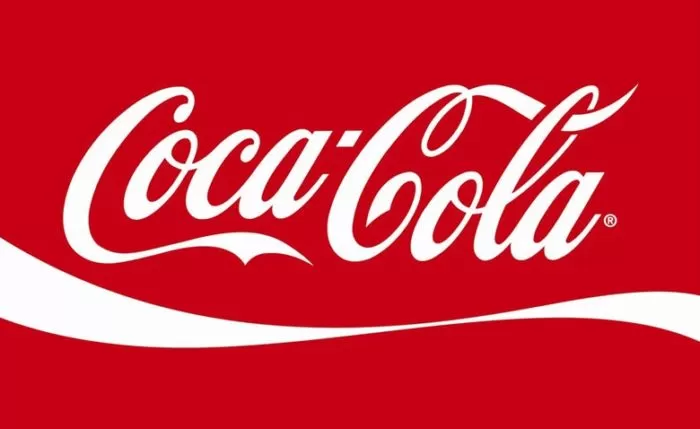
The Quality Management System at Coca Cola
It is very important that each product that Coca Cola produces is of a high quality standard to ensure that each product is exactly the same. This is important as the company wants to meet with customer requirements and expectations. With the brand having such a global presence, it is vital that these checks are continually consistent. The standardized bottle of Coca Cola has elements that need to be checked whilst on the production line to make sure that a high quality is being met. The most common checks include ingredients, packaging and distribution. Much of the testing being taken place is during the production process, as machines and a small team of employees monitor progress. It is the responsibility of all of Coca Colas staff to check quality from hygiene operators to product and packaging quality. This shows that these constant checks require staff to be on the lookout for problems and take responsibility for this, to ensure maintained quality.
Coca-cola uses inspection throughout its production process, especially in the testing of the Coca-Cola formula to ensure that each product meets specific requirements. Inspection is normally referred to as the sampling of a product after production in order to take corrective action to maintain the quality of products. Coca-Cola has incorporated this method into their organisational structure as it has the ability of eliminating mistakes and maintaining high quality standards, thus reducing the chance of product recall. It is also easy to implement and is cost effective.
Coca-cola uses both Quality Control (QC) and Quality Assurance (QA) throughout its production process. QC mainly focuses on the production line itself, whereas QA focuses on its entire operations process and related functions, addressing potential problems very quickly. In QC and QA, state of the art computers check all aspects of the production process, maintaining consistency and quality by checking the consistency of the formula, the creation of the bottle (blowing), fill levels of each bottle, labeling of each bottle, overall increasing the speed of production and quality checks, which ensures that product demands are met. QC and QA helps reduce the risk of defective products reaching a customer; problems are found and resolved in the production process, for example, bottles that are considered to be defective are placed in a waiting area for inspection. QA also focuses on the quality of supplied goods to Coca-cola, for example sugar, which is supplied by Tate and Lyle. Coca-cola informs that they have never had a problem with their suppliers. QA can also involve the training of staff ensuring that employees understand how to operate machinery. Coca-Cola ensures that all members of staff receive training prior to their employment, so that employees can operate machinery efficiently. Machinery is also under constant maintenance, which requires highly skilled engineers to fix problems, and help Coca-cola maintain high outputs.
Every bottle is also checked that it is at the correct fill level and has the correct label. This is done by a computer which every bottle passes through during the production process. Any faulty products are taken off the main production line. Should the quality control measures find any errors, the production line is frozen up to the last good check that was made. The Coca Cola bottling plant also checks the utilization level of each production line using a scorecard system. This shows the percentage of the line that is being utilized and allows managers to increase the production levels of a line if necessary.
Coca-Cola also uses Total Quality Management (TQM) , which involves the management of quality at every level of the organisation , including; suppliers, production, customers etc. This allows Coca-cola to retain/regain competitiveness to achieve increased customer satisfaction . Coca-cola uses this method to continuously improve the quality of their products. Teamwork is very important and Coca-cola ensures that every member of staff is involved in the production process, meaning that each employee understands their job/roles, thus improving morale and motivation , overall increasing productivity. TQM practices can also increase customer involvement as many organisations, including Coca-Cola relish the opportunity to receive feedback and information from their consumers. Overall, reducing waste and costs, provides Coca-cola with a competitive advantage .
The Production Process
Before production starts on the line cleaning quality tasks are performed to rinse internal pipelines, machines and equipment. This is often performed during a switch over of lines for example, changing Coke to Diet Coke to ensure that the taste is the same. This quality check is performed for both hygiene purposes and product quality. When these checks are performed the production process can begin.
Coca Cola uses a database system called Questar which enables them to perform checks on the line. For example, all materials are coded and each line is issued with a bill of materials before the process starts. This ensures that the correct materials are put on the line. This is a check that is designed to eliminate problems on the production line and is audited regularly. Without this system, product quality wouldn’t be assessed at this high level. Other quality checks on the line include packaging and carbonation which is monitored by an operator who notes down the values to ensure they are meeting standards.
To test product quality further lab technicians carry out over 2000 spot checks a day to ensure quality and consistency. This process can be prior to production or during production which can involve taking a sample of bottles off the production line. Quality tests include, the CO2 and sugar values, micro testing, packaging quality and cap tightness. These tests are designed so that total quality management ideas can be put forward. For example, one way in which Coca Cola has improved their production process is during the wrapping stage at the end of the line. The machine performed revolutions around the products wrapping it in plastic until the contents were secure. One initiative they adopted meant that one less revolution was needed. This idea however, did not impact on the quality of the packaging or the actual product therefore saving large amounts of money on packaging costs. This change has been beneficial to the organisation. Continuous improvement can also be used to adhere to environmental and social principles which the company has the responsibility to abide by. Continuous Improvement methods are sometimes easy to identify but could lead to a big changes within the organisation. The idea of continuous improvement is to reveal opportunities which could change the way something is performed. Any sources of waste, scrap or rework are potential projects which can be improved.
The successfulness of this system can be measured by assessing the consistency of the product quality. Coca Cola say that ‘Our Company’s Global Product Quality Index rating has consistently reached averages near 94 since 2007, with a 94.3 in 2010, while our Company Global Package Quality Index has steadily increased since 2007 to a 92.6 rating in 2010, our highest value to date’. This is an obvious indication this quality system is working well throughout the organisation. This increase of the index shows that the consistency of the products is being recognized by consumers.
Related posts:
- Case Study: The Coca-Cola Company Struggles with Ethical Crisis
- Case Study: Analysis of the Ethical Behavior of Coca Cola
- Case Study of Burger King: Achieving Competitive Advantage through Quality Management
- SWOT Analysis of Coca Cola
- Case Study: Marketing Strategy of Walt Disney Company
- Case Study of Papa John’s: Quality as a Core Business Strategy
- Case Study: Johnson & Johnson Company Analysis
- Case Study: Inventory Management Practices at Walmart
- Case Study: Analysis of Performance Management at British Petroleum
- Total Quality Management And Continuous Quality Improvement
Leave a Reply Cancel reply
Your email address will not be published. Required fields are marked *

While other MediaPost newsletters and articles remain free to all ... our new Research Intelligencer service is reserved for paid subscribers ...
Subscribe today to gain access to every Research Intelligencer article we publish as well as the exclusive daily newsletter, full access to The MediaPost Cases , first-look research and daily insights from Joe Mandese, Editor in Chief.
If you're already a paid subscriber, please sign-in.
Username
Password Forgot?
Become a free MediaPost member now to read this article
- Unlimited articles every day
- Keep up-to-date with media, marketing and advertising news
- Invitations to exclusive industry events and research
Log in if you are already a member

At Cannes, Coca-Cola Crushes Cans - And Awards
- by Barbara Lippert , Columnist, June 20, 2024

It’s alive, baby! I’m a huge fan of playing with fonts, type, and logos, so I love that this week Coke’s inspired, logo-crunching work has crushed at Cannes.
Kicking off the first award show on Monday evening, the brand’s “Recycle Me” campaign by WPP Open X -- led by Ogilvy New York -- won the Print & Publishing Grand Prix, the first Grand Prix for Coke in 10 years.
Created to encourage recycling, the inspired design idea has the confidence to go to that verboten place -- crushing the brand’s proud, historical, and instantly identifiable logo.
In a process like what happens to compacted, recycled cans, the logo is crunched into various reduced and flattened forms. And then some digital “jaws of life” rescues the newly pummeled logo, removing it from the can.
As with those antique Timex commercials that strap a watch to a car wheel, the 147-year-old Coke logo “takes a licking and keeps on ticking.”
advertisement
The entry video reveals the process. Rather than having human hands handle the can flattening, the agency used machines like mechanical presses to crush them.
Did someone say “mechanical presses?” That suggests Apple’s recent disaster of a crusher ad that took the world’s art and cultural artifacts and annihilated them in an industrial press, all to fit inside its new, thinner iPad.
It was like viewing Cruella killing puppies, and the social media world reacted so violently that Apple had to pull the spot.
Whereas, by immense contrast, the Coke logo results prove the opposite: how resilient, unsinkable, and basically unkillable that world-famous 1877 Spencerian script mark is.
And seeing through the crunch, with letters deleted, massacred, or left for dead, our brains seem to make room for what’s missing and put Humpty Cola together again.
That way, something as old as the iconic original -- that has worked since the very beginning of advertising -- gets a new, intriguing life.
Launched with big, red billboards, OOH in Argentina, Mexico and Brazil, the campaign is expected to expand worldwide.
In its case study for the entry, Ogilvy NY calls the “Recycle Me” work a “call to action, taken right from the side of the can.”
“Each execution features a unique logo, mimicking the different ways people crush their cans before recycling them,” it says.
The work fits into Coke’s larger “World Without Waste” campaign, its sustainable packaging initiative.
But “Recycle Me” isn’t the soft drink giant’s only Latin American campaign that lovingly embraces its living logo.
This campaign, called “Every Coca-Cola is Welcome,” honors the culture’s long history of copying the logo in hand-painted or home-drawn versions, gracing handmade signs or the sides of local bodegas and shops.
Each one featured is like found art, charmingly imperfect in its own way. But rather than suppressing these unauthorized images, the Atlanta-based company elevated them to individual billboard status.
What I also like about both campaigns is that they serve as the ultimate anti-AI.
For the Grand Prix winner, the point was to venture into the now crucial need for recycling.
But in so doing, the campaign also shows us that old warhorse icons never die. Rather, with the right focus and messaging, they can spring back to life, offering inspiration and enormous flexibility for the future.

MediaPost's MADblog columnist.
- The Greatest Commercial Is Now The Most Outstanding One, Too
- Odds And Endings: Aniston's Eyes, And The Sins Of The Fathers
- Battle Of The Network Scars: The Return of 'Botched'
- Go Figure: Dove's Lady-Shaped Bottles Make Eyes Roll
- Dancing On A Glass Ceiling: The Many Roles Of Ivanka Trump
- SUGGESTED TOPICS
- The Magazine
- Newsletters
- Managing Yourself
- Managing Teams
- Work-life Balance
- The Big Idea
- Data & Visuals
- Reading Lists
- Case Selections
- HBR Learning
- Topic Feeds
- Account Settings
- Email Preferences
How Retailers Became Ad Platforms
- Sebastian Gabel,
- Duncan Simester,
- Artem Timoshenko

It’s a major growth opportunity — if companies can navigate the strategic challenges.
Major retailers are today, most notably Amazon, are creating and operating their own advertising platforms — and they’re making millions doing it. McKinsey estimates that by 2026, retail media will add $1.3 trillion to enterprise values in the U.S. alone, with profit margins between 50% and 70%. In this article, the authors introduce readers to the main kinds of retail media, discuss three strategic challenges that they present, and provide guidance for effectively managing those challenges.
A rapidly growing number of major retailers are today creating and operating their own advertising platforms — a phenomenon widely referred to as retail media. Nobody has had more success in the space than Amazon, which in 2023 earned $46.9 billion from advertising, comprised primarily of sponsored ads on its site. This figure exceeds the annual global revenue of Coca-Cola and makes Amazon the third-largest advertising platform in the United States, behind only Google and Facebook.
- SG Sebastian Gabel is an assistant professor of marketing at Erasmus University. His research focuses on developing deep learning for targeting applications in retailing. Prior to his academic career, Sebastian co-founded a retail-media services company that was sold to the Schwarz global retail group.
- DS Duncan Simester is the NTU Professor of Marketing at the MIT Sloan School of Management. His research focuses on marketing strategy, go-to-market strategies, and the use of artificial intelligence and experiments to improve business decisions. He regularly consults with companies on these topics.
- AT Artem Timoshenko is an assistant professor of marketing at the Kellogg School of Management, at Northwestern University. His research focuses on applications of AI to marketing analytics and customer insights.
Partner Center
- Today's news
- Reviews and deals
- Climate change
- 2024 election
- Fall allergies
- Health news
- Mental health
- Sexual health
- Family health
- So mini ways
- Unapologetically
- Buying guides
Entertainment
- How to Watch
- My watchlist
- Stock market
- Biden economy
- Personal finance
- Stocks: most active
- Stocks: gainers
- Stocks: losers
- Trending tickers
- World indices
- US Treasury bonds
- Top mutual funds
- Highest open interest
- Highest implied volatility
- Currency converter
- Basic materials
- Communication services
- Consumer cyclical
- Consumer defensive
- Financial services
- Industrials
- Real estate
- Mutual funds
- Credit cards
- Balance transfer cards
- Cash back cards
- Rewards cards
- Travel cards
- Online checking
- High-yield savings
- Money market
- Home equity loan
- Personal loans
- Student loans
- Options pit
- Fantasy football
- Pro Pick 'Em
- College Pick 'Em
- Fantasy baseball
- Fantasy hockey
- Fantasy basketball
- Download the app
- Daily fantasy
- Scores and schedules
- GameChannel
- World Baseball Classic
- Premier League
- CONCACAF League
- Champions League
- Motorsports
- Horse racing
- Newsletters
New on Yahoo
- Privacy Dashboard
Billionaire Coca-Cola heir Alki David ordered to pay $900m in landmark sexual assault case
A billionaire heir to a Coca-Cola bottling fortune has been ordered to pay $900m (£710m) in damages to a former employee in a landmark sexual assault case .
The Los Angeles court’s ruling on Monday is believed to be the highest amount ever given in compensation to a victim of an alleged crime of this nature.
Cypriot-British businessman Alkiviades David , 56, is alleged to have raped his former staffer in a string of increasingly aggressive assaults that took place between February 2016 to April 2019.
Although an heir to the Coca-Cola fortune, David is successful in his own right and made his money through Hologram USA, which brought famous artists including Michael Jackson back to life in hologram form.
Throughout proceedings, the court heard several shocking claims about the businessman including the use of a pornographic image that was captioned “HER-ASS” on his company’s HR department’s door.
His behaviour was allegedly so prolific that his office became known as the “rape room” among staff.
The prosecuting lawyer Gary Dordick said: “This monumental verdict marks a significant triumph for justice and sets a precedent in the fight against workplace sexual assault.”
The woman, known as Jane Doe, was subject to “severe sexual harassment and assault, including rape” from the businessman, according to her lawyer.
According to the lawsuit, the woman was warned of her employer’s “alarmingly hostile” actions towards women when another female employee claimed he had kissed her without consent.
History is said to have repeated itself just weeks later on the billionaire’s private Greek island when David attempted to kiss Doe on a work trip, who then found herself dismissed when she turned down his advances.
He proceeded to offer her employment again in 2018 and she accepted a role at his cannabis manufacturing company, Swiss-X.
This saw David invite the woman back to his hotel room to sample the product and it was there that he sexually assaulted her again by forcing her to touch his genitals, it is alleged.
The abuse is said to have escalated to rape in April 2019 when he called Doe to a supposed business meeting. The lawsuit notes that his dog, a Doberman pinscher, was present.
By this point, David was already beginning to face the consequences of his actions against different women, which had already cost him $80m since 2014.
Other cases against the billionaire in 2016 were settled out of court.
But in April 2019, he was ordered to pay $8m in damages to a woman who was fired after refusing to sleep with the businessman in a case that eerily echoed that of Doe.
Dordick said: “It’s so despicable, the facts of this case. He raped my client while on civil trial in another case.”
Later that year, he was ordered to pay the biggest sum to a victim to date when his former production assistant Mahim Khan was awarded $58 million in her sexual battery case.
This case was brought about after he thrust his pelvis into her face to create the impression that she was performing oral sex on him.
At the time, the businessman was told “never to think of violating another woman’s body”.
David denied all claims against him in 2019 and said: “I never touched any of these women.”
He alleged to The Daily Beast in 2021, before being ordered to pay $900m: “They’ve completely exhausted me of my cash resources.”
“Fortunately, I’ve got a great mother, God bless her, who’s been very supportive of me.”
Despite this, the 2020 Sunday Times Rich List put David’s net worth at an estimated £2.35bn.
The Independent has reached out to a representative for Alkiviades David for comment.
Rape Crisis offers support for those affected by rape and sexual abuse. You can call them on 0808 802 9999 in England and Wales, 0808 801 0302 in Scotland, and 0800 0246 991 in Northern Ireland, or visit their website at www.rapecrisis.org.uk . If you are in the US, you can call Rainn on 800-656-HOPE (4673)
‘Pirates Of The Caribbean' Actor And Pro Surfer Killed By Shark In Hawaii: What We Know
- Share to Facebook
- Share to Twitter
- Share to Linkedin
Tamayo Perry—a professional surfer with acting credits in films like "Pirates of the Caribbean: On Stranger Tides" and "Blue Crush"—died Sunday after sustaining several shark bites near the Hawaiian island of O'ahu, multiple outlets reported.
Tamayo Perry from Hawaii gets a barrel as he surfs a big day at Pipeline on the North Shore of Oahu, ... [+] Hawaii on Nov. 24, 2019.
Perry, who was serving as a lifeguard with Honolulu Ocean Safety Services, was attacked by a shark near Mālaekahana Beach just before 1 p.m. Sunday, the Associated Press reported.
First responders brought Perry, 49, ashore by jetski and he was later pronounced dead.
Honolulu Ocean Safety acting chief Kurt Lager said during a press conference that Perry, who had been working as a lifeguard for over a decade, was a globally known professional surfer with an "infectious" personality.
Honolulu Mayor Rick Blangiardi reportedly said Perry was a "legendary waterman" and called his death “a tragic loss.”
Perry was originally from O'ahu and had been professionally surfing for over a decade, most notably spending time surfing the Pipeline off of O'ahu's North Shore, known as the world's deadliest wave.
Outside of surfing, Perry was known for minor roles in "Blue Crush," "Hawaii Five-0" and "Pirates of the Caribbean: On Stranger Tides," in which he played an uncredited Buccaneer (he also did stunts for the 2004 Owen Wilson film "The Big Bounce," according to IMDB ).
In addition to his acting credits, he starred in ad campaigns for the Nissan Xterra SUV that aired during the NFL playoffs and Winter Olympics, and appeared in a Coca-Cola commercial.
Get Forbes Breaking News Text Alerts: We’re launching text message alerts so you'll always know the biggest stories shaping the day’s headlines. Text “Alerts” to (201) 335-0739 or sign up here .
Crucial Quote
“As much as people loved him, he loved everyone else more," Lager reportedly said of Perry.
Key Background
Honolulu Ocean Safety Services posted shark warnings in the area after the attack on Perry. There are about 40 species of sharks that live in Hawaiian waters, according to the state Department of Land and Natural Resources, and eight are commonly spotted near shore. Tiger sharks are considered the most aggressive in Hawaii. It has not been reported what type of shark attacked Perry.
Eight shark attacks were reported last year and fewer than 180 have been reported across all of Hawaii since 1980, according to American Surf Magazine . Attacks seem to increase between the months of October through December, the state says , a trend that caused early Hawaiians to caution against going in the water in the autumn months. American Surf also noted that attacks seem to be on the rise: There have been an average of 5.8 attacks annually from 2000 to 2023, the magazine said, an increase of 1.7 per year in the two decades before. The magazine attributed the rise to better reporting of such attacks.
Further Reading

- Editorial Standards
- Reprints & Permissions
Join The Conversation
One Community. Many Voices. Create a free account to share your thoughts.
Forbes Community Guidelines
Our community is about connecting people through open and thoughtful conversations. We want our readers to share their views and exchange ideas and facts in a safe space.
In order to do so, please follow the posting rules in our site's Terms of Service. We've summarized some of those key rules below. Simply put, keep it civil.
Your post will be rejected if we notice that it seems to contain:
- False or intentionally out-of-context or misleading information
- Insults, profanity, incoherent, obscene or inflammatory language or threats of any kind
- Attacks on the identity of other commenters or the article's author
- Content that otherwise violates our site's terms.
User accounts will be blocked if we notice or believe that users are engaged in:
- Continuous attempts to re-post comments that have been previously moderated/rejected
- Racist, sexist, homophobic or other discriminatory comments
- Attempts or tactics that put the site security at risk
- Actions that otherwise violate our site's terms.
So, how can you be a power user?
- Stay on topic and share your insights
- Feel free to be clear and thoughtful to get your point across
- ‘Like’ or ‘Dislike’ to show your point of view.
- Protect your community.
- Use the report tool to alert us when someone breaks the rules.
Thanks for reading our community guidelines. Please read the full list of posting rules found in our site's Terms of Service.

IMAGES
VIDEO
COMMENTS
1. "Share a Coke" Campaign. Launched initially in Australia in 2011, the "Share a Coke" campaign is one of the most celebrated and successful marketing strategies in Coca-Cola's history. The campaign was groundbreaking in its approach—replacing the iconic Coca-Cola logo on bottles with common first names.
Learn how Coca-Cola targets different segments, channels, and markets with its products, pricing, place, and promotion strategies. Explore the company's logo, sponsorships, social media, and SEO tactics to boost its brand value and market share.
Learn how Coca-Cola became the world's most valuable brand with its marketing strategies, from the logo and bottle design to the franchise model and diversification. Explore the history, research, and facts of Coca-Cola's marketing journey.
because it will describe the 4Ps of a well-known company, which is Coca-Cola, not to. mention it will focus on how marketing environm ent factors of SWOT analysis affect. its 4Ps. The aim of this ...
Learn about the origins, history, and expansion of Coca-Cola, the iconic American beverage company that operates in over 200 countries. Discover how Coca-Cola innovated, advertised, and competed in the soft drink market for over a century.
A case study has been undertaken where the image processing algorithm inspects the beverage bottle for any defects. ... The Coca-Cola brand represents the most successful product in commercial ...
The response: First, Coca-Cola focused on rejuvenating its core product line. The successful launch of Coke Zero, a diet variation of the drink pitched at men (Diet Coke or Coke Light is ...
In early 2020, James Quincey, the 14th chair of the 133-year old The Coca-Cola Company, was in the midst of a years-long transformation of Coca-Cola from being the leading carbonated soft drink (CSD) beverage company into a total beverage company. The company's flagship product, Coca-Cola, had been the world's best-selling beverage for 100 ...
Innovation and transformation are the key points to business success. Coca- Cola is the world's largest distributor and producer of soft drink concentrates and syrups. Starting as a beverage manufacturer and retailer in 1886 with its flagship product, Coca-Cola. The marketing strategies, innovation and transformation are embedded in different culture that led to the sustainable growth of ...
Learn how Coca-Cola evolved from a patent medicine to a global beverage giant, with its iconic logo, contour bottle, and diverse products. Discover its key milestones, challenges, and strategies to maintain its market leadership.
Coca-Cola has 200 brands worldwide and thanks to the excellent marketing of The Coca-Cola Company, its products are available in over 200 countries worldwide [3, 4]. While being the largest ...
Coca-Cola products are sold in more than 200 countries and territories, and each of those markets faces unique exposure and vulnerability to the impacts of climate change. Mitigation efforts—those focused on reducing greenhouse gas emissions—are vital to any company's climate strategy and critical to global efforts to avoid unmanageable ...
2. The "Always Coca-Cola" Campaign. This is probably one of the most well-known marketing campaigns of all time. Responsible for the permanent branding of polar bears into Coke's company image, the "Always Coca-Cola" campaign began in 1993 when the company decided to experiment with a recent technological development: computer animation.
The brand marketing strategy of Coca-Cola is exceptionally unique. Coca-Cola first set up its roots in 1886 and is still somehow capable of competing with every other soft-drink brand in the market. Starting with nine servings a day, Coca-Cola now produces about 1.9 billion servings each day. Coca-Cola's marketing strategies are so precisely ...
5. Impact of Brand Storytelling on Coca-Cola's Brand Identity. Brand storytelling has played a significant role in shaping Coca-Cola's brand identity. The strategic use of narratives and emotional appeals has had several key impacts on the brand's perception, consumer loyalty, and global consistency.
In 2022, Coca-Cola's brand value was estimated at USD 97.9 billion. The company spent USD 4 billion annually between 2015 and 2021 (except 2020) to advertise its drinks to a global audience. Coca-Cola offers beverage options through its 200+ brands to consumers worldwide.
The Coca-Cola marketing strategy is an innovative, ever-evolving, multi-pronged strategy that has given the brand its proprietary eponymous status. The potent combination of the Coca Cola ...
By 2004 Neville Isdell, former chairman and CEO of Coca-Cola Beverages Plc in Great Britain, was called out of retirement to improve Coca-Cola's reputation; however, the com- pany continued to face ethical crises. These problems aside, Coca-Cola's overall perfor- mance seemed to improve under Isdell's tenure.
Coca- Cola is the world's largest distributor and producer of soft drink concentrates and syrups. Starting as a beverage manufacturer and retailer in 1886 with its flagship product, Coca-Cola. The marketing strategies, innovation and transformation are embedded in different culture that led to the sustainable growth of Coca-Cola Company.
Case Study on Coca Cola Company. Coca-Cola began in 1886 when Dr. John Pemberton created a carbonated flavored syrup to be mixed into soda fountain beverages. It is now the world's largest beverage company with over 500 brands including Diet Coke and Fanta. Coca-Cola uses a multisegment targeting strategy to market its products to different ...
The successfulness of this system can be measured by assessing the consistency of the product quality. Coca Cola say that 'Our Company's Global Product Quality Index rating has consistently reached averages near 94 since 2007, with a 94.3 in 2010, while our Company Global Package Quality Index has steadily increased since 2007 to a 92.6 rating in 2010, our highest value to date'.
Case Study of Coca-Cola Company - Free download as Word Doc (.doc / .docx), PDF File (.pdf), Text File (.txt) or read online for free. Coca-Cola Company has strengths in dominating the carbonated soft drink market and flexibility in decision making, but has weaknesses in low market share of non-carbonated drinks and inability to meet earnings targets.
Coca-Cola's sustainable packaging and recycling goals were to, firstly, avoid using 100,000 metric tonnes of packaging materials between 2007 and 2010, then recycle or recover more than 90 percent of waste materials at manufacturing facilities by 2010 and lastly, increase recycled content in PET bottles to an average of 10 percent by 2010.
At Cannes, Coca-Cola Crushes Cans - And Awards - 06/21/2024. ... In its case study for the entry, Ogilvy NY calls the "Recycle Me" work a "call to action, taken right from the side of the ...
Major retailers are today, most notably Amazon, are creating and operating their own advertising platforms — and they're making millions doing it. McKinsey estimates that by 2026, retail media ...
founded in 1892, is one of the world's famous and largest. brands in beverage industry, which is a global symbol of. American tastes. With more than 2,800 products. available in more than 200 ...
The Coca-Cola Co., 22 Civ. 10941 (NSR), see flags on bad law, and search Casetext's comprehensive legal database ... (2d Cir. 2017) (finding allegations regarding study showing that 89% of products were mislabeled and that plaintiff routinely shopped for those products were sufficient to plausibly allege that the plaintiff purchased at least ...
A billionaire heir to a Coca-Cola bottling fortune has been ordered to pay $900m (£710m) in damages to a former employee in a landmark sexual assault case.. The Los Angeles court's ruling on ...
An actor known for his roles in seaside films like "Blue Crush" and "Pirates of the Caribbean: On Stranger Tides" died in Hawaii Sunday.